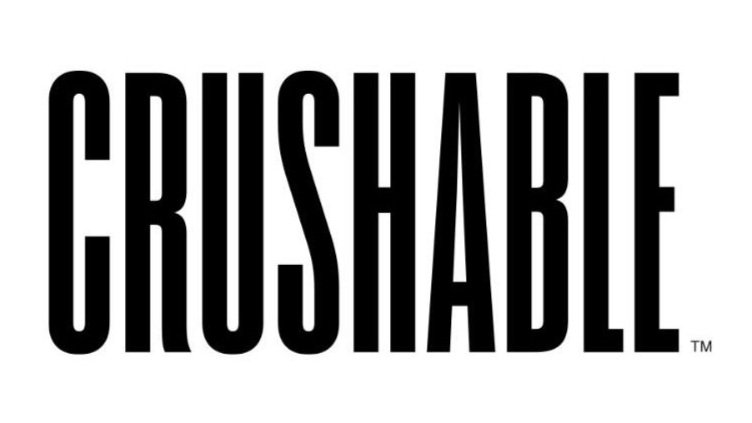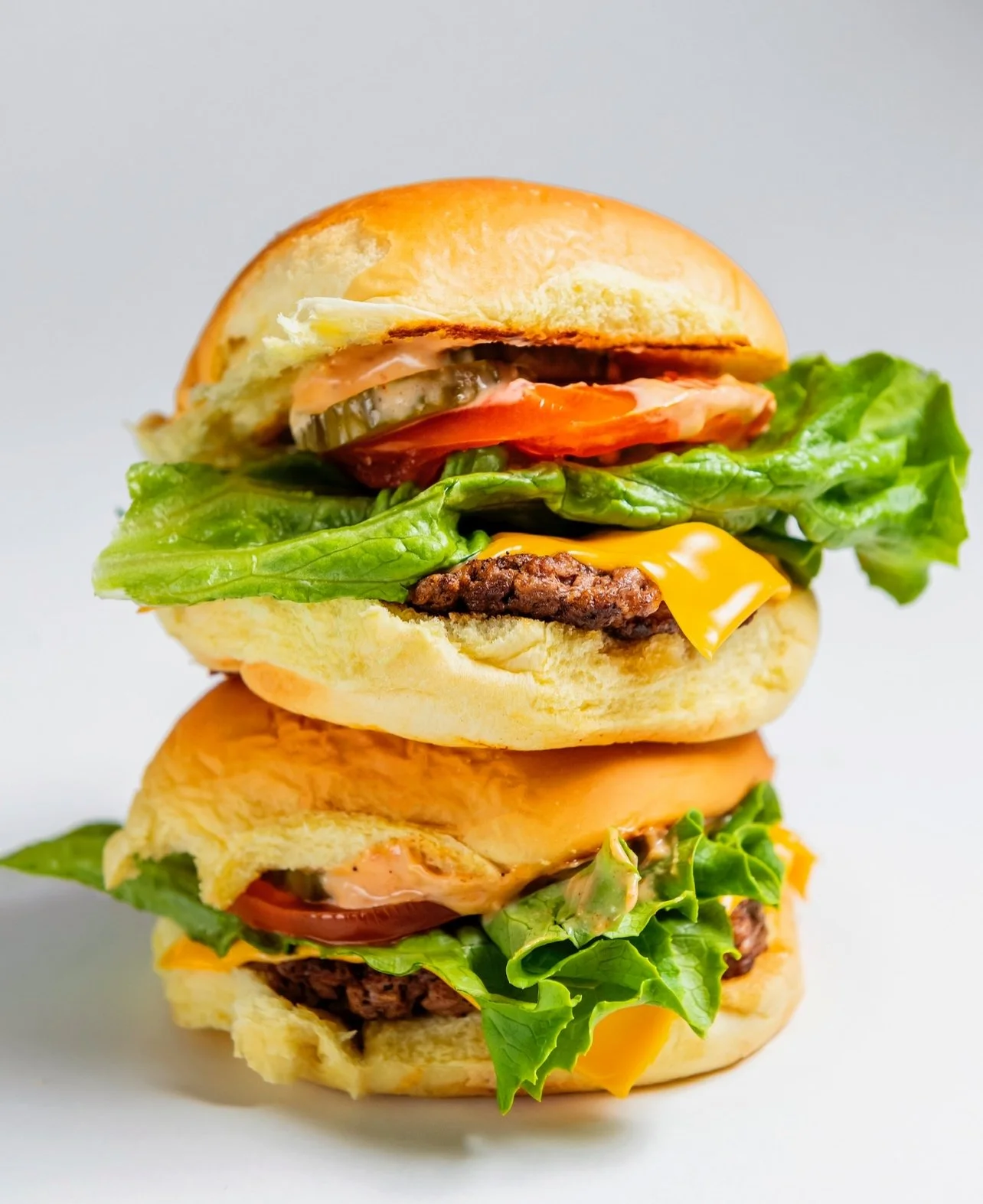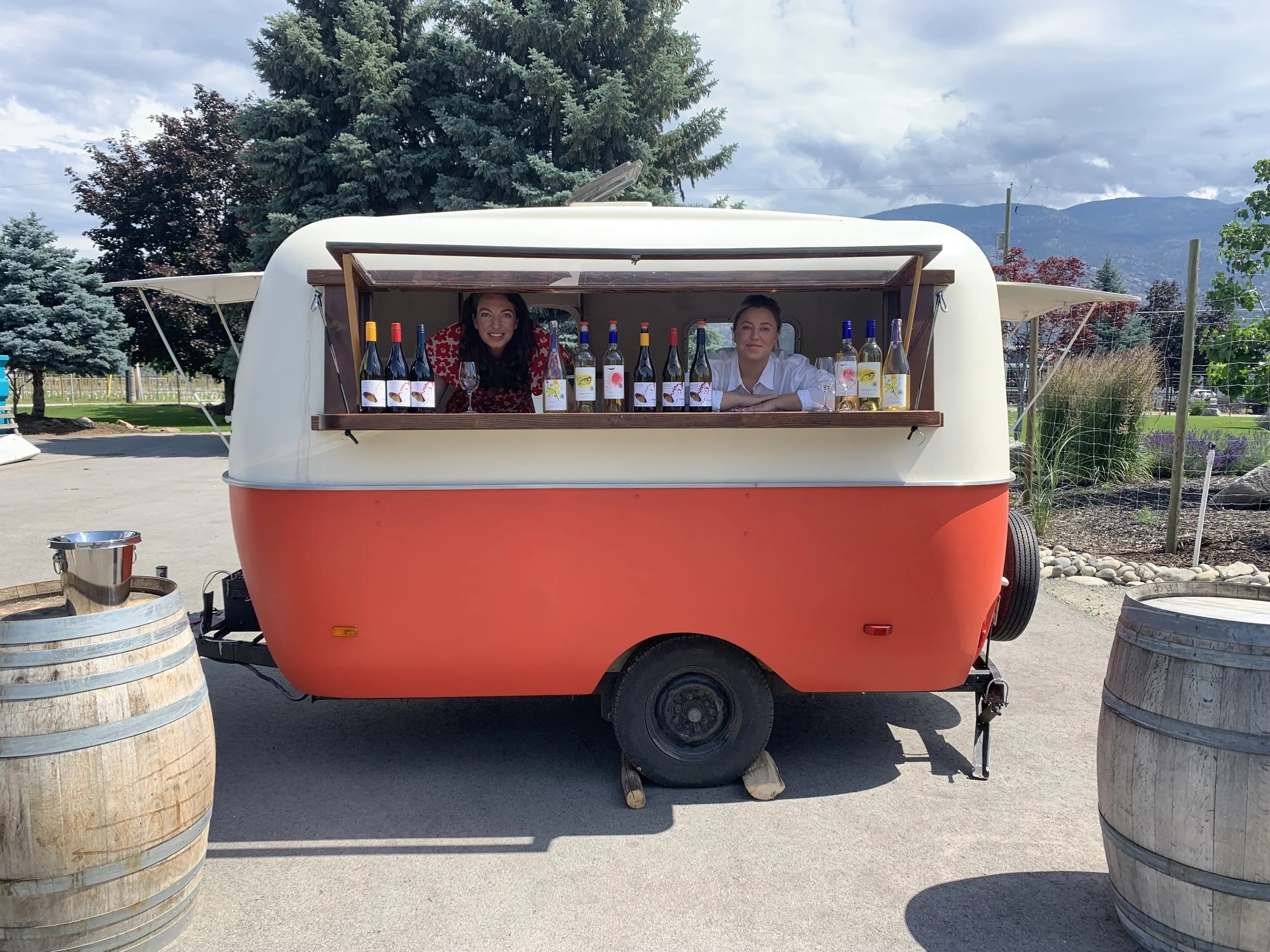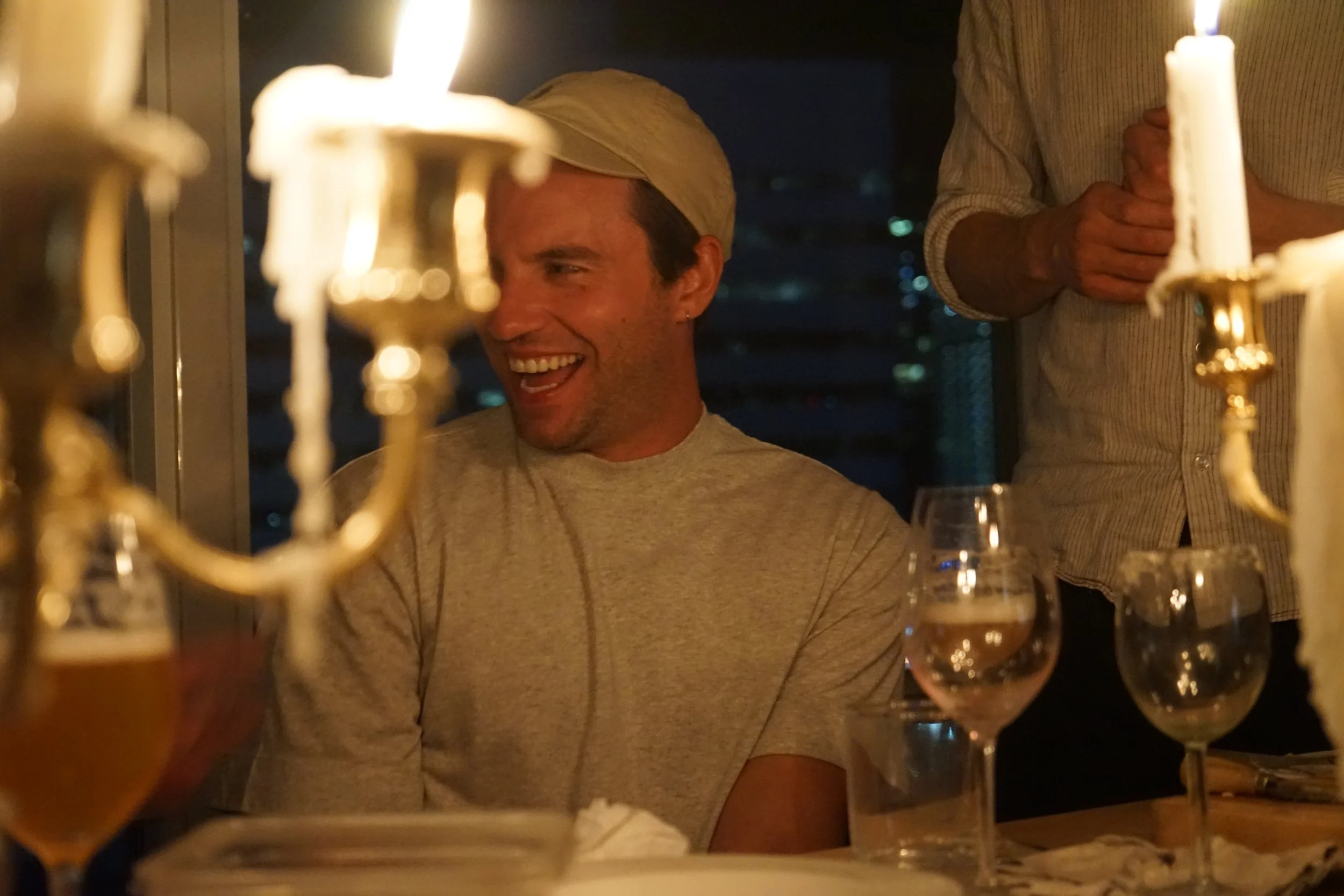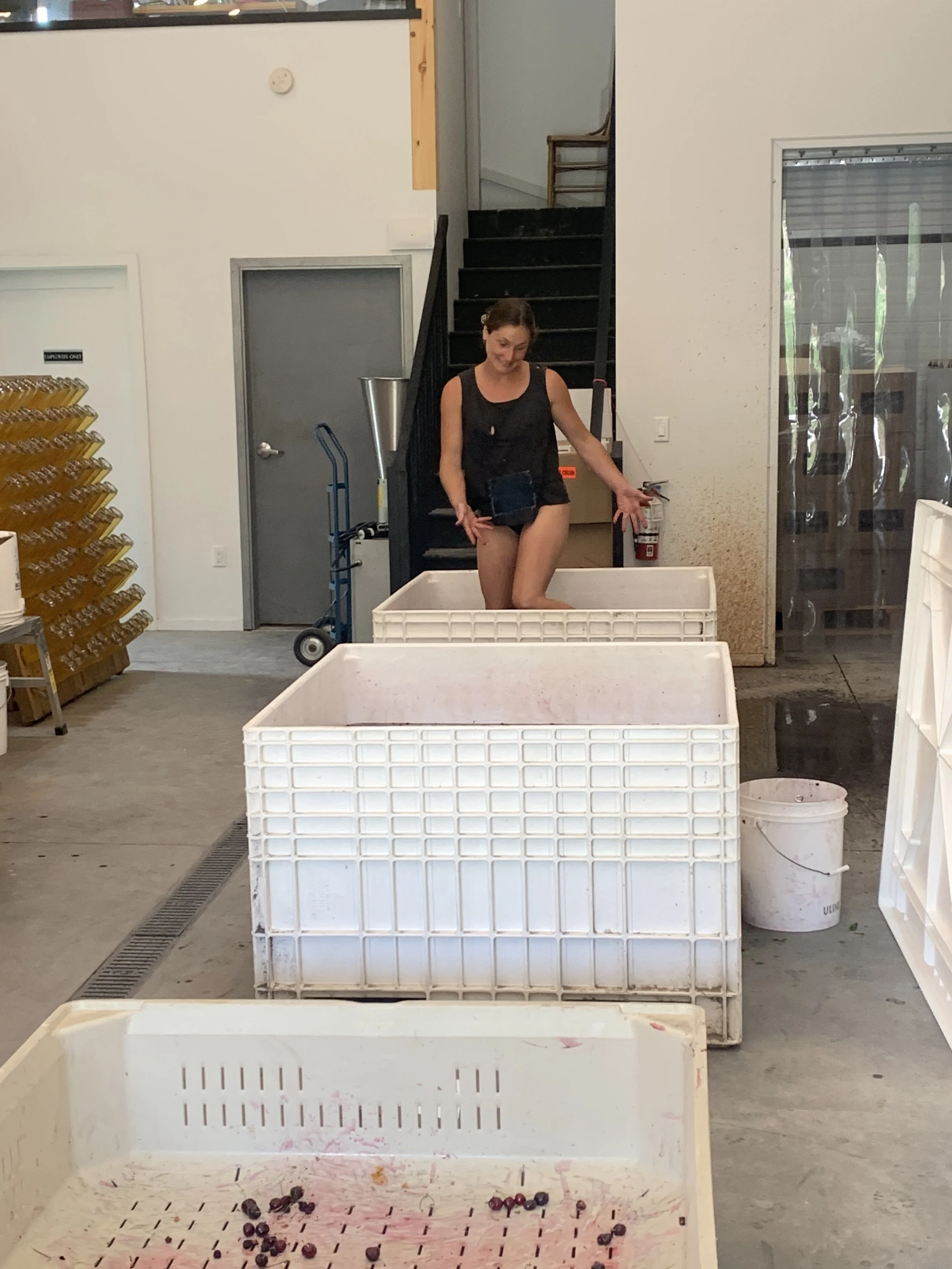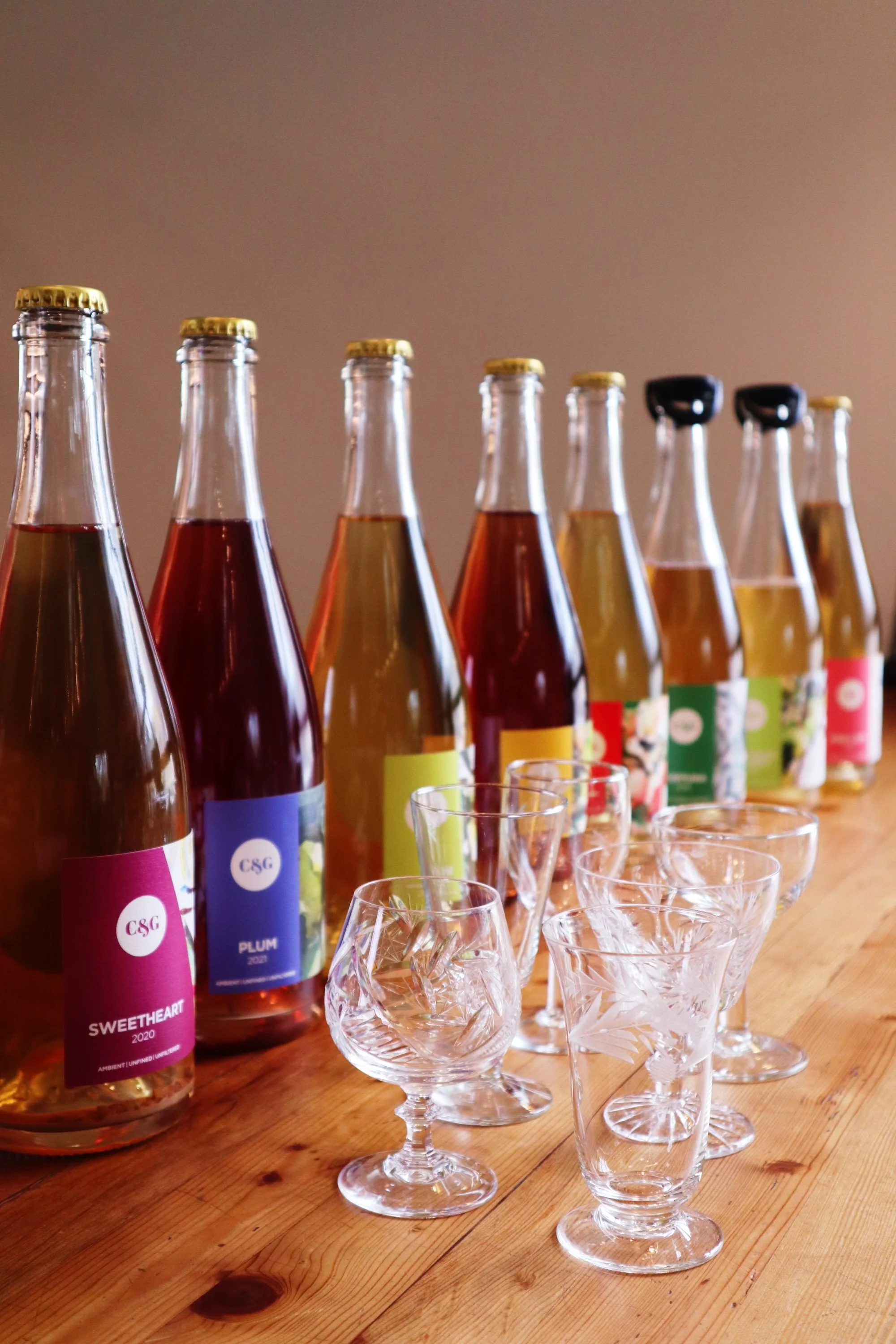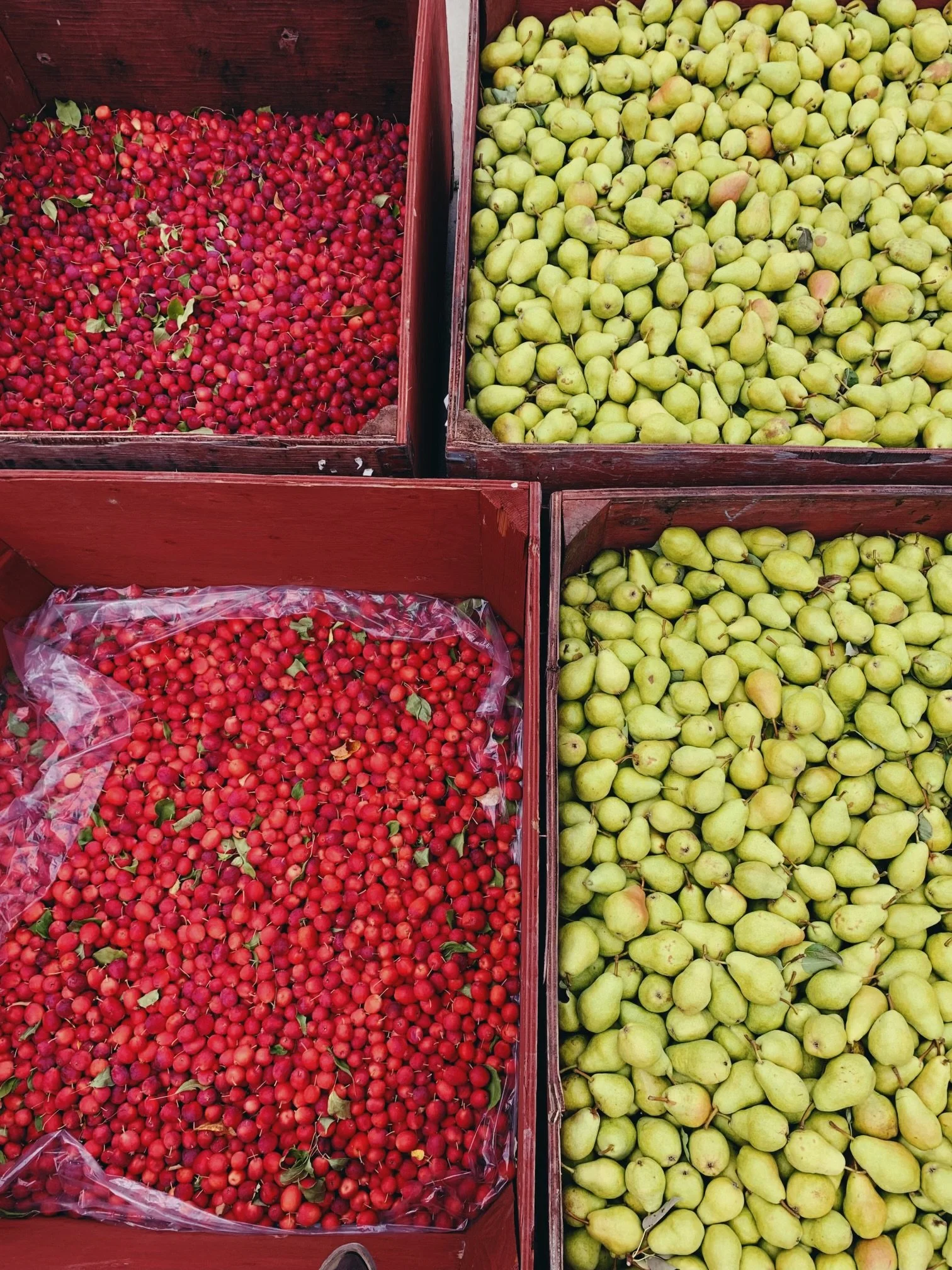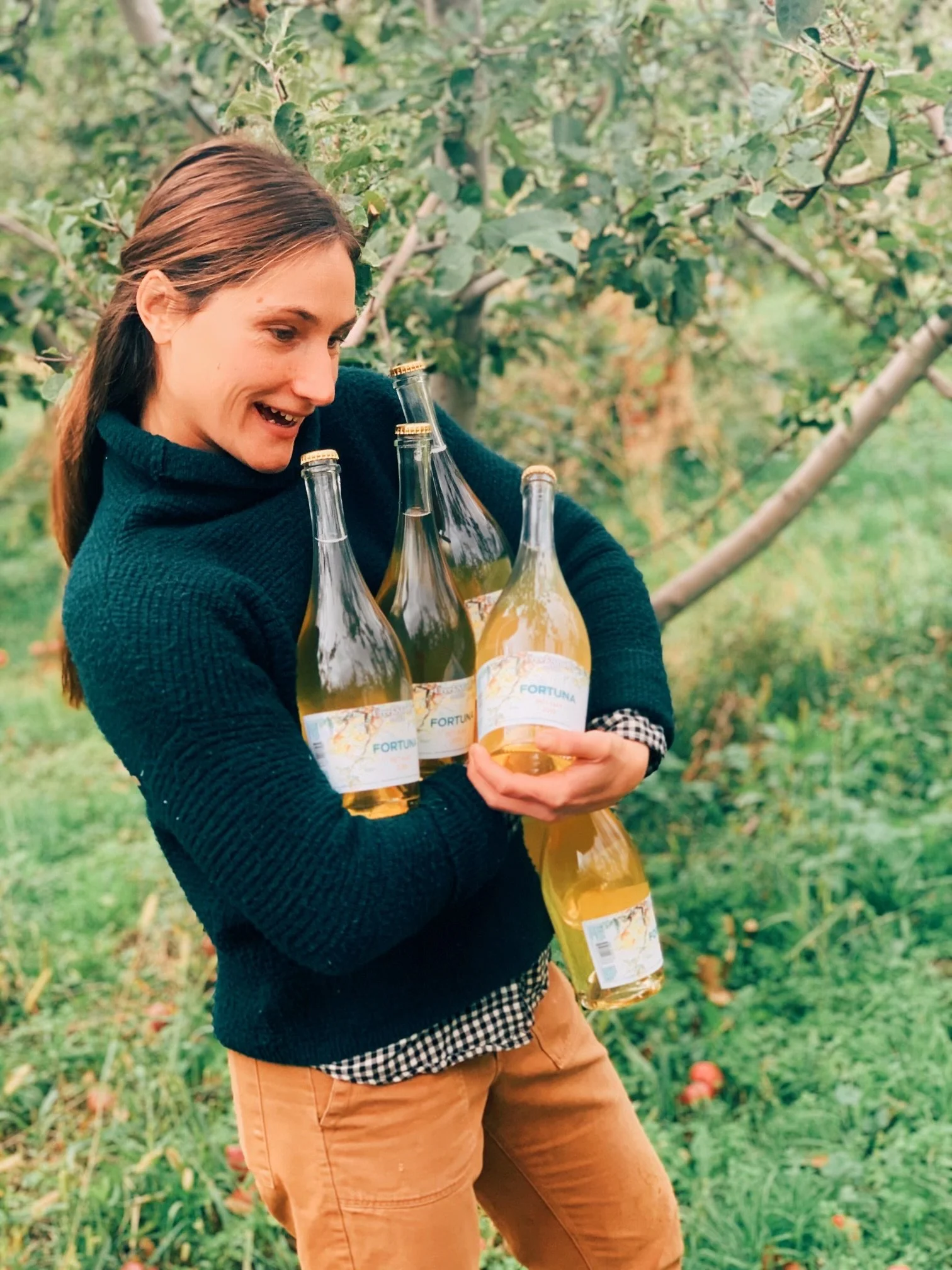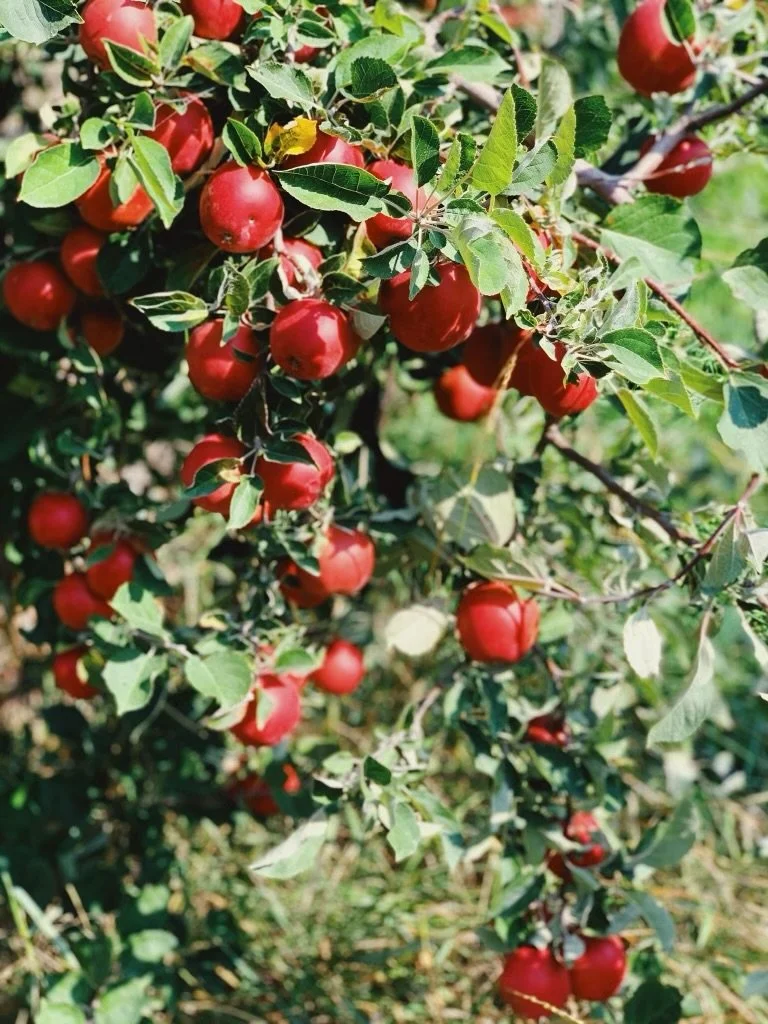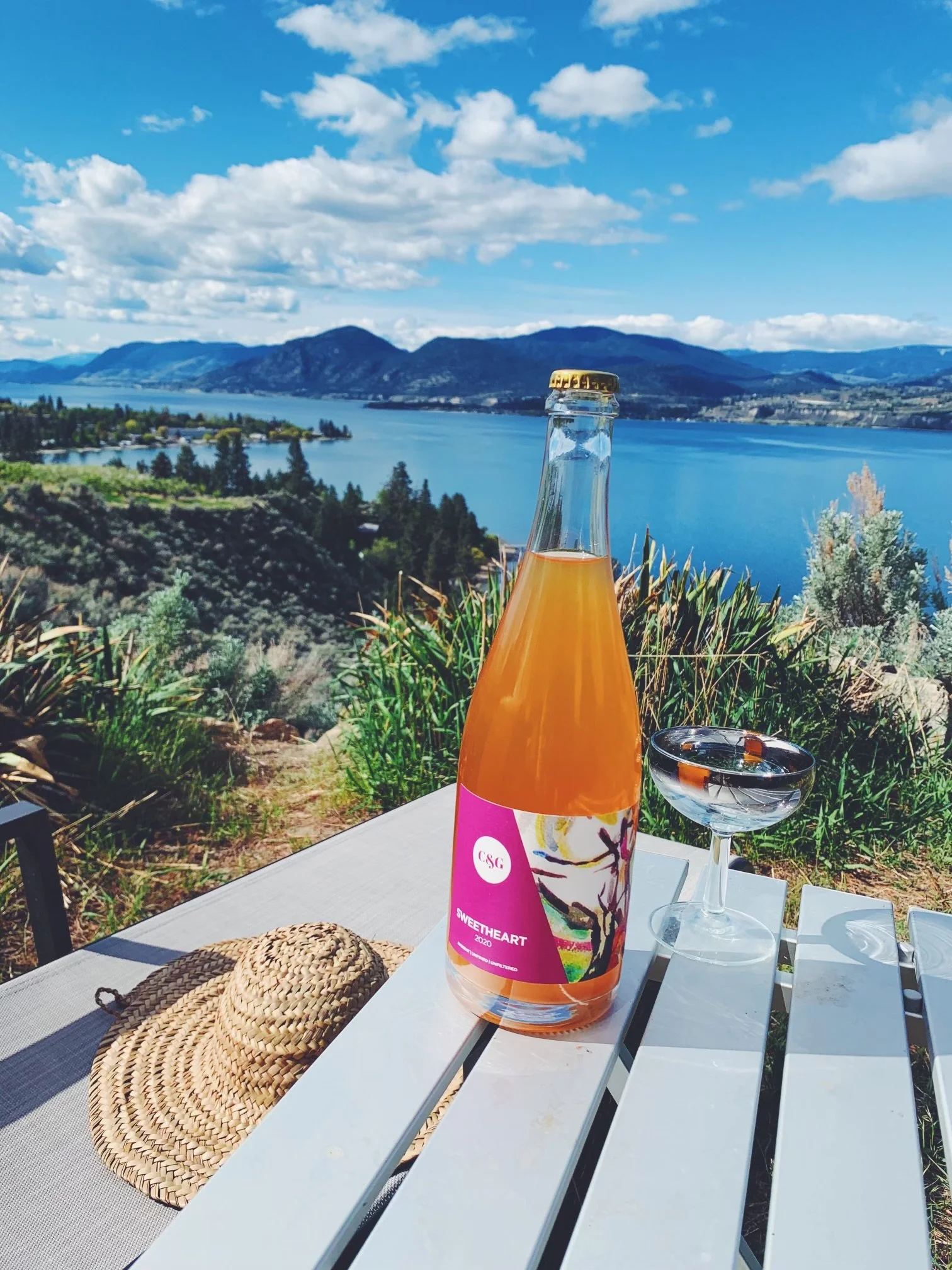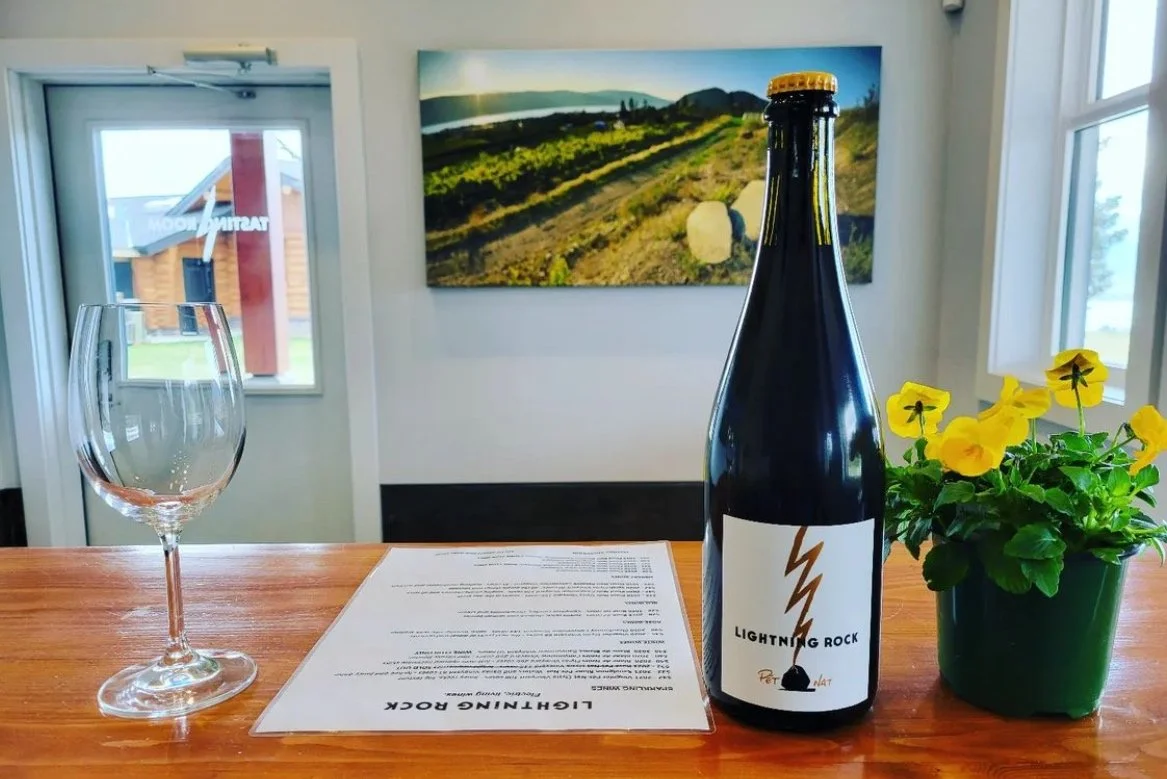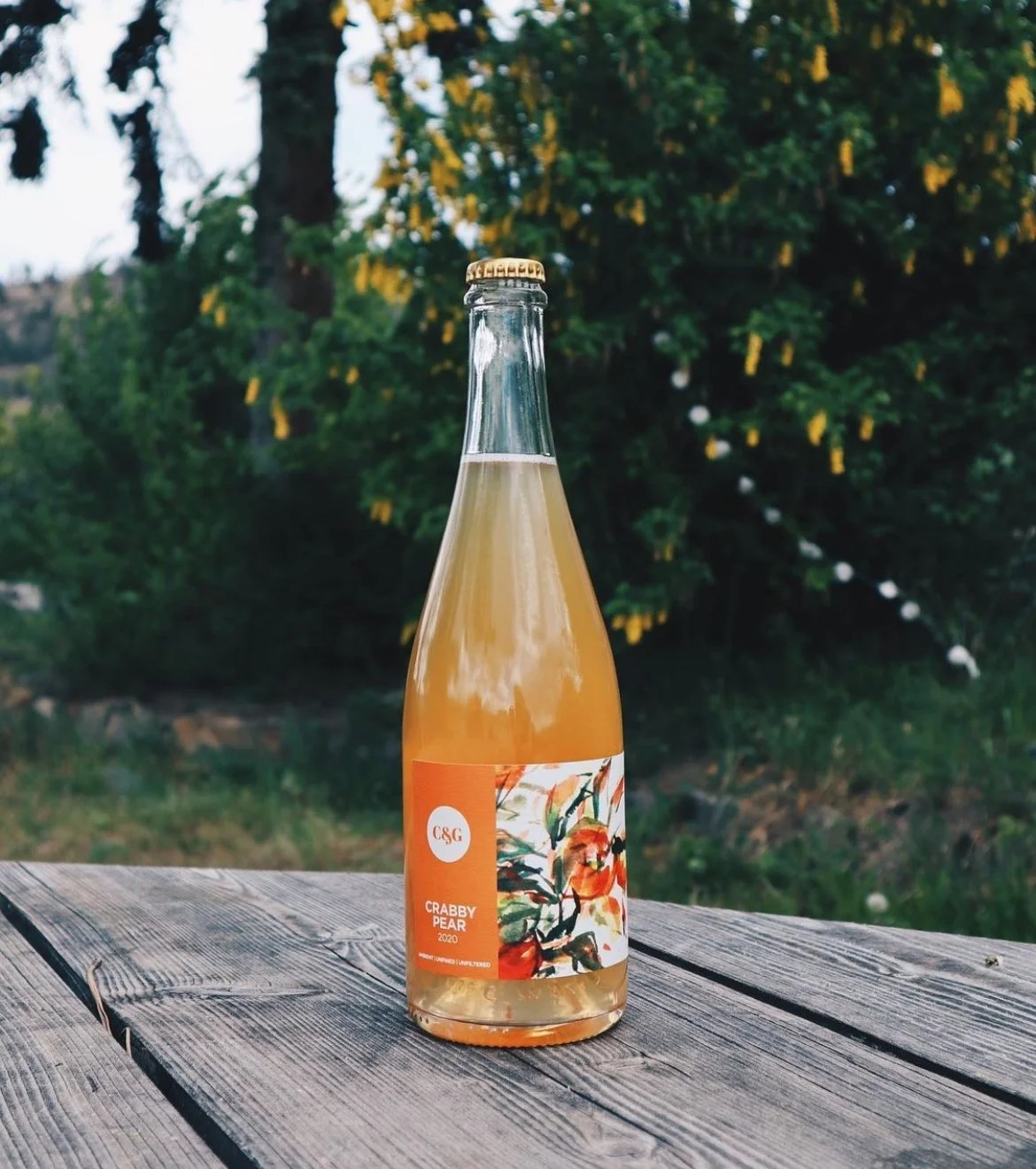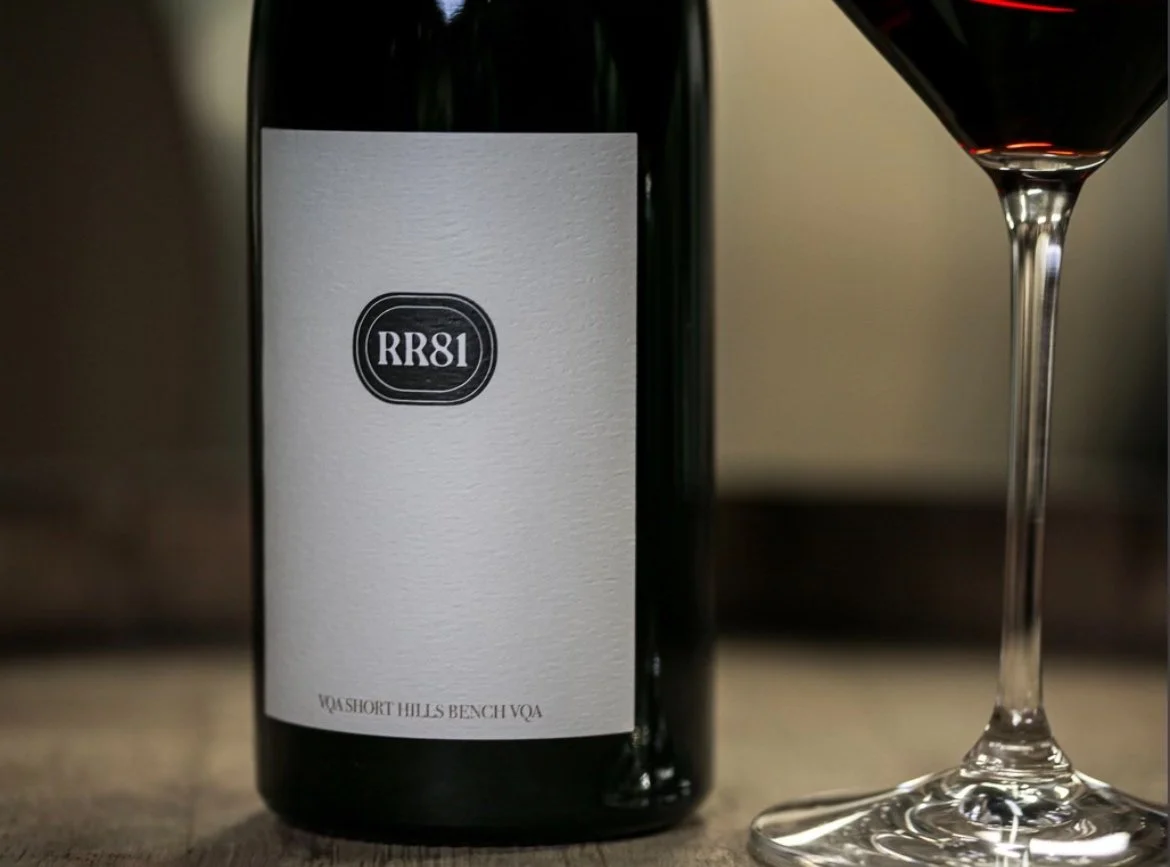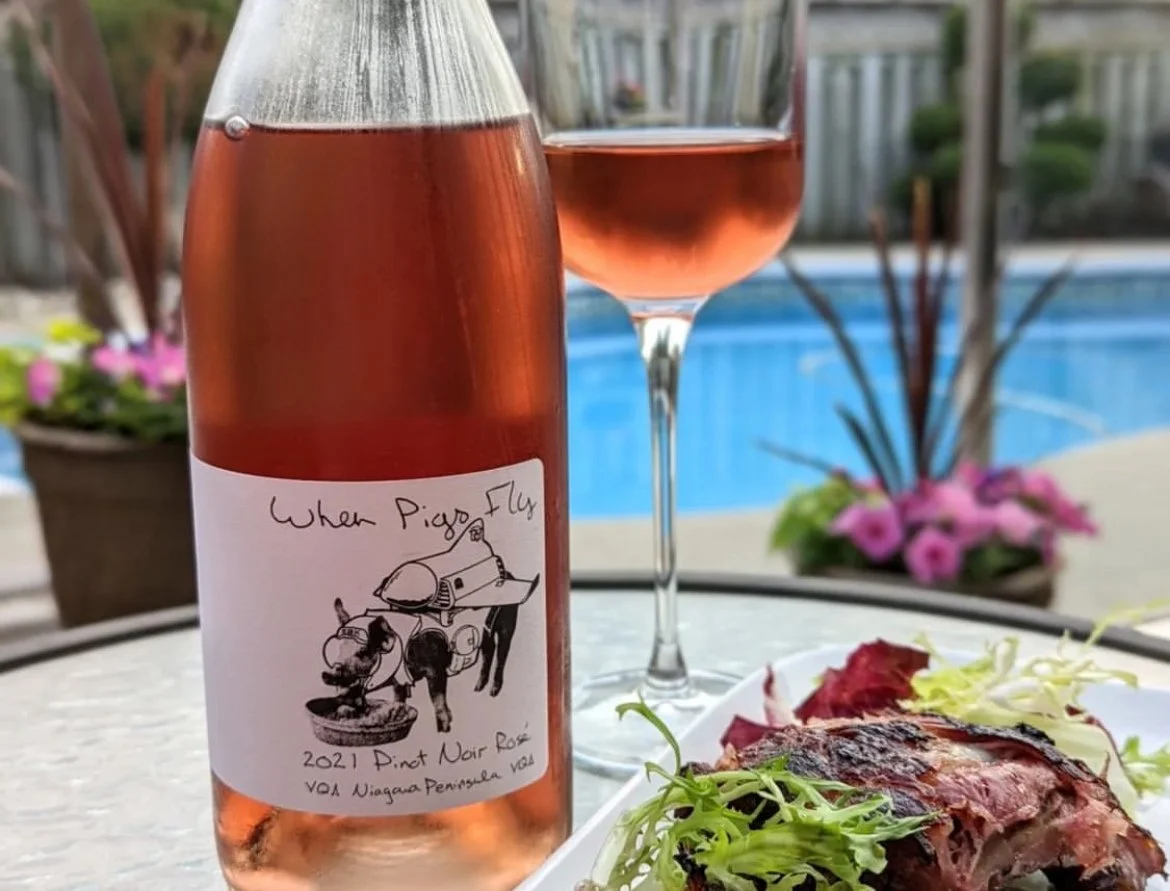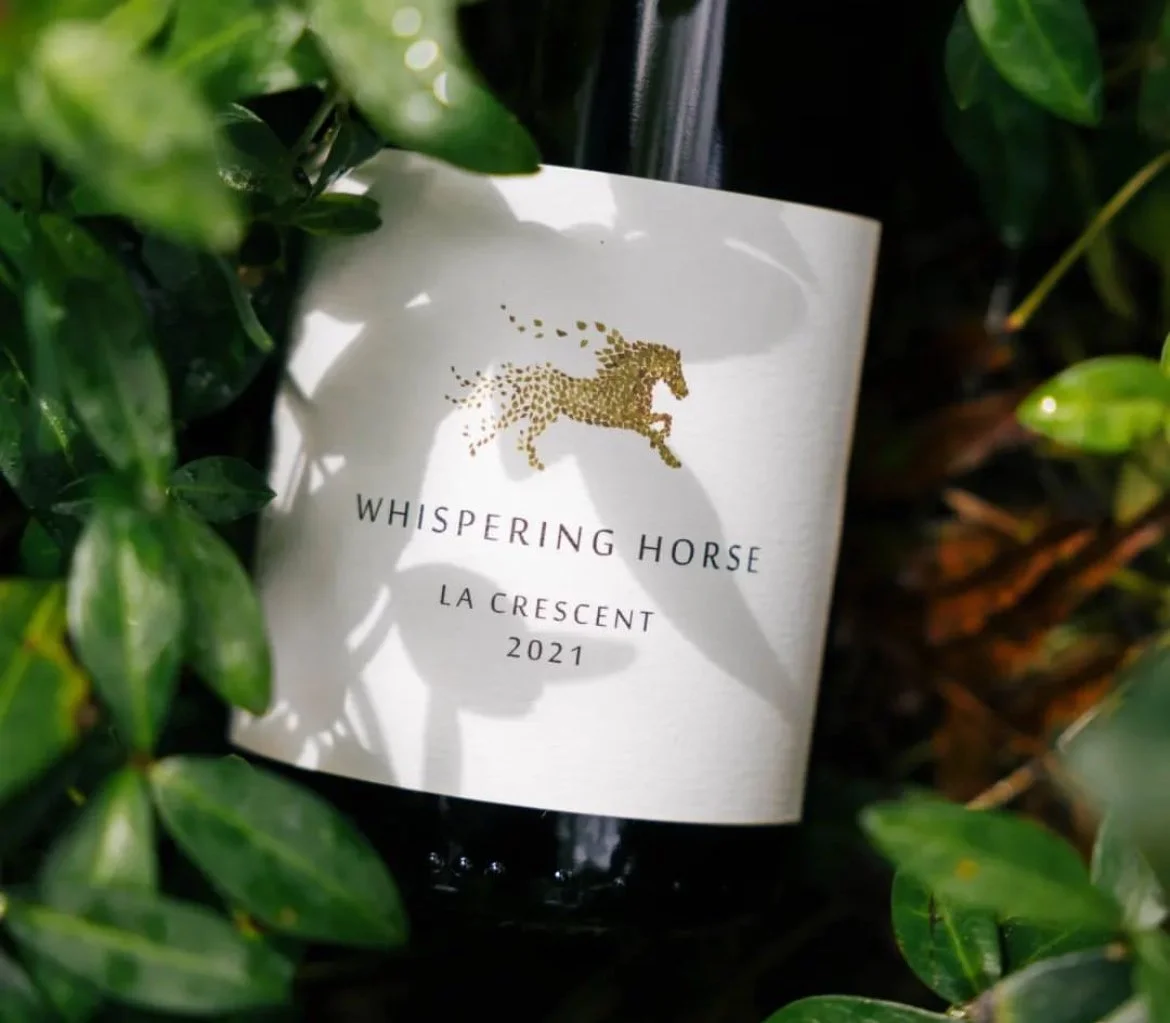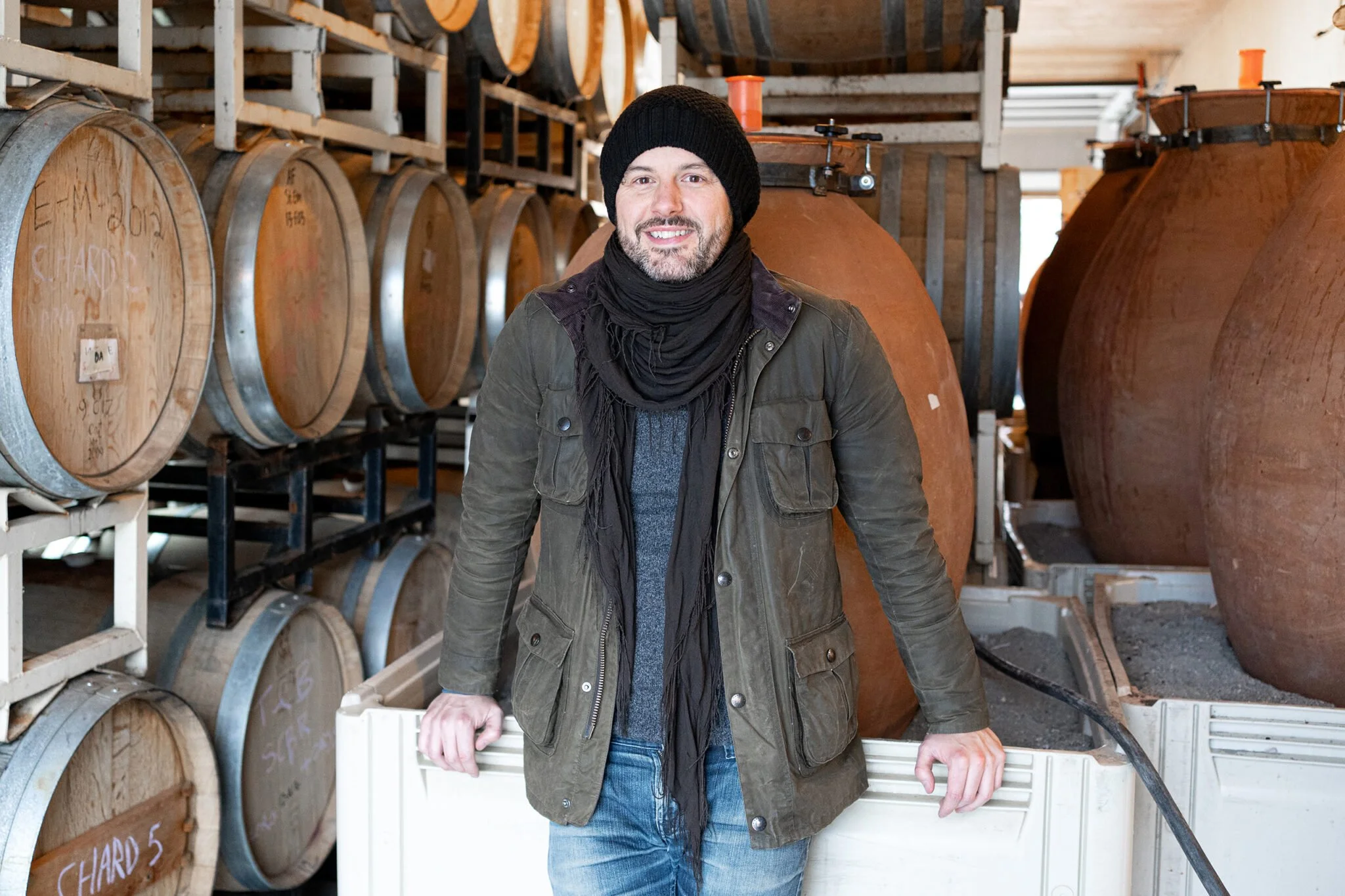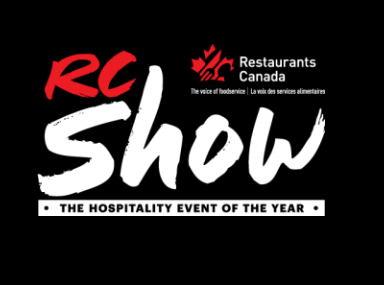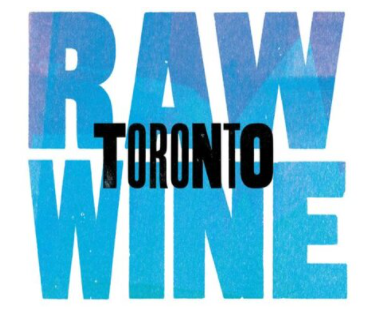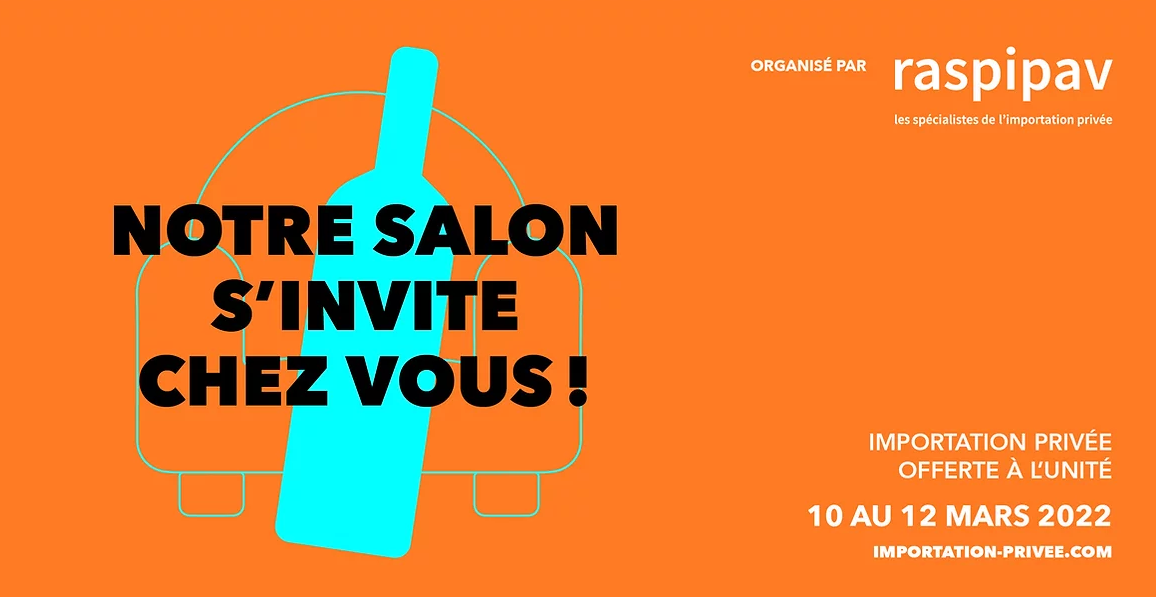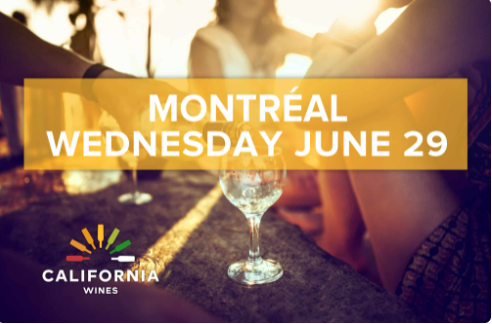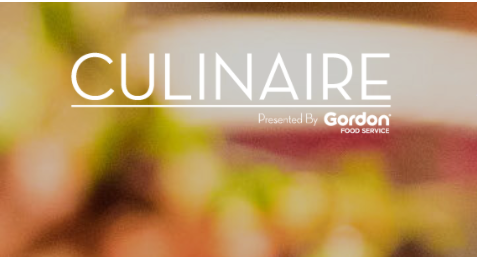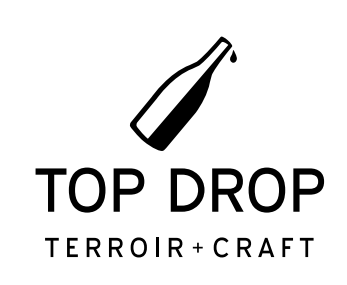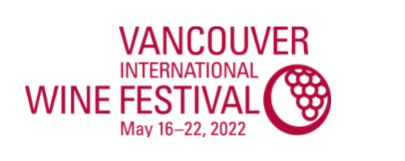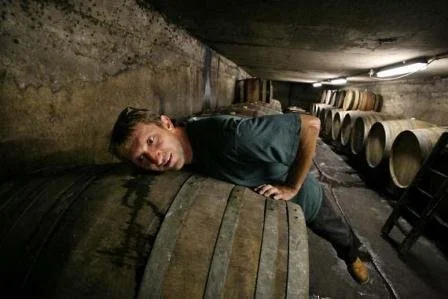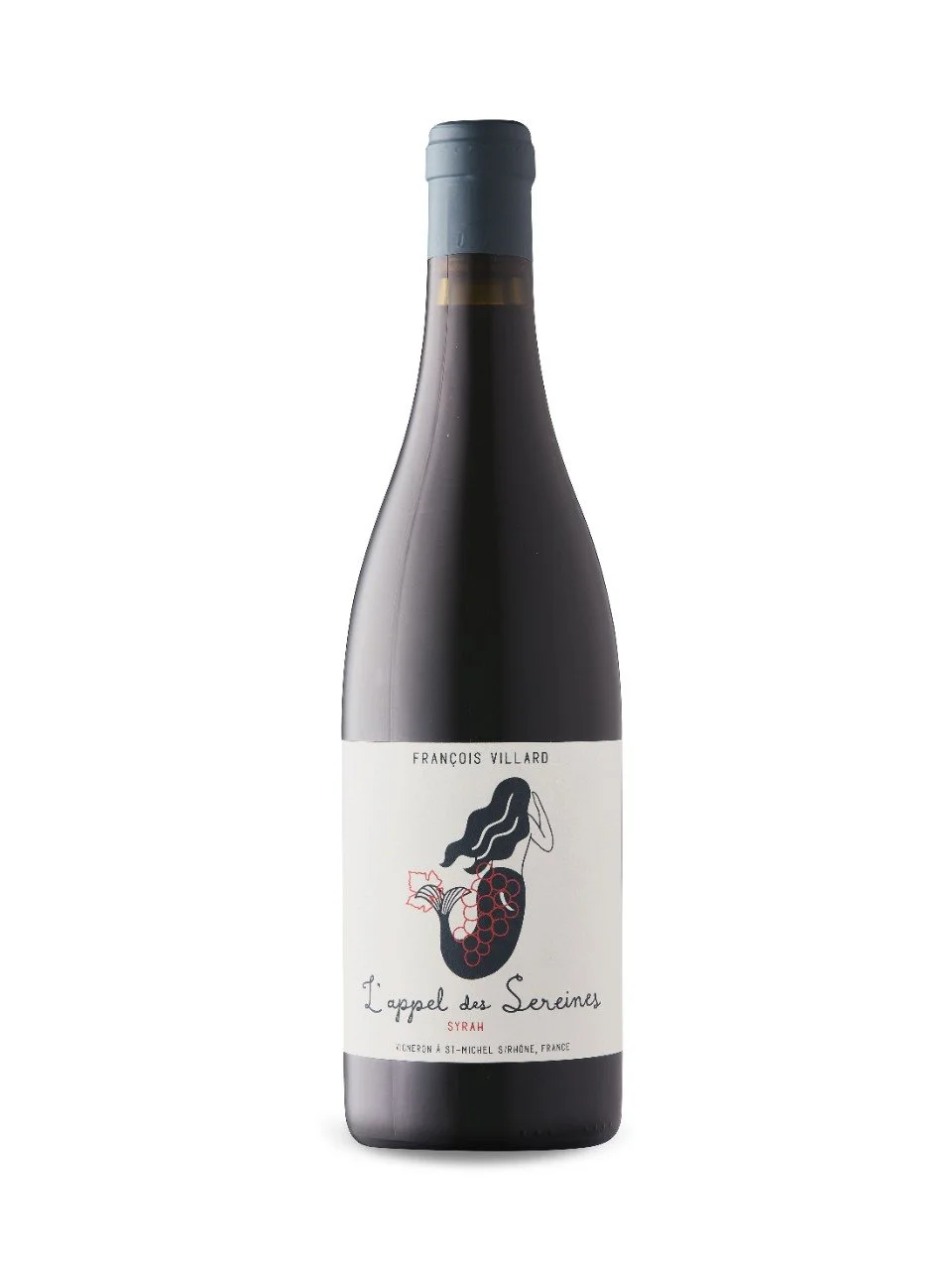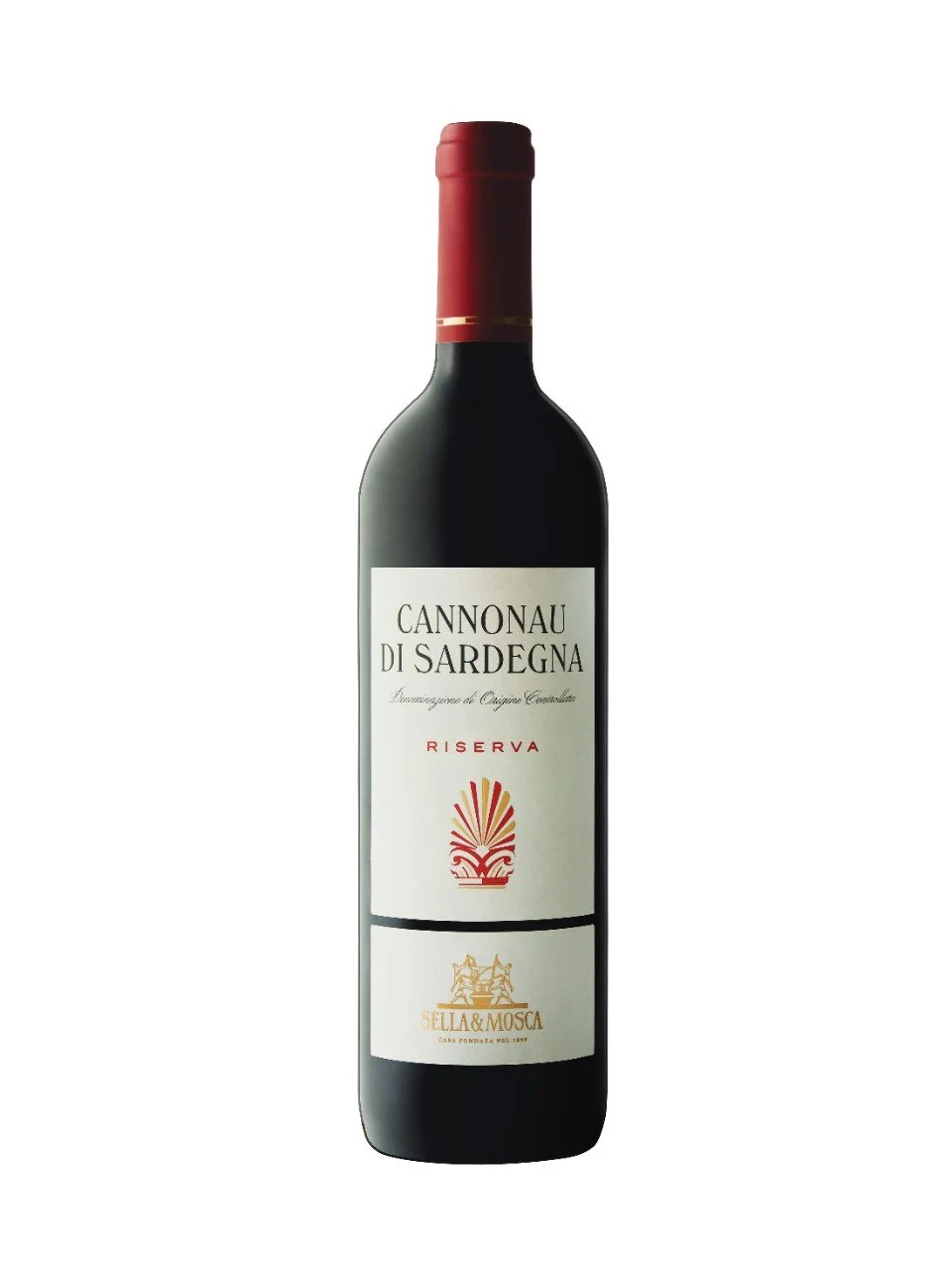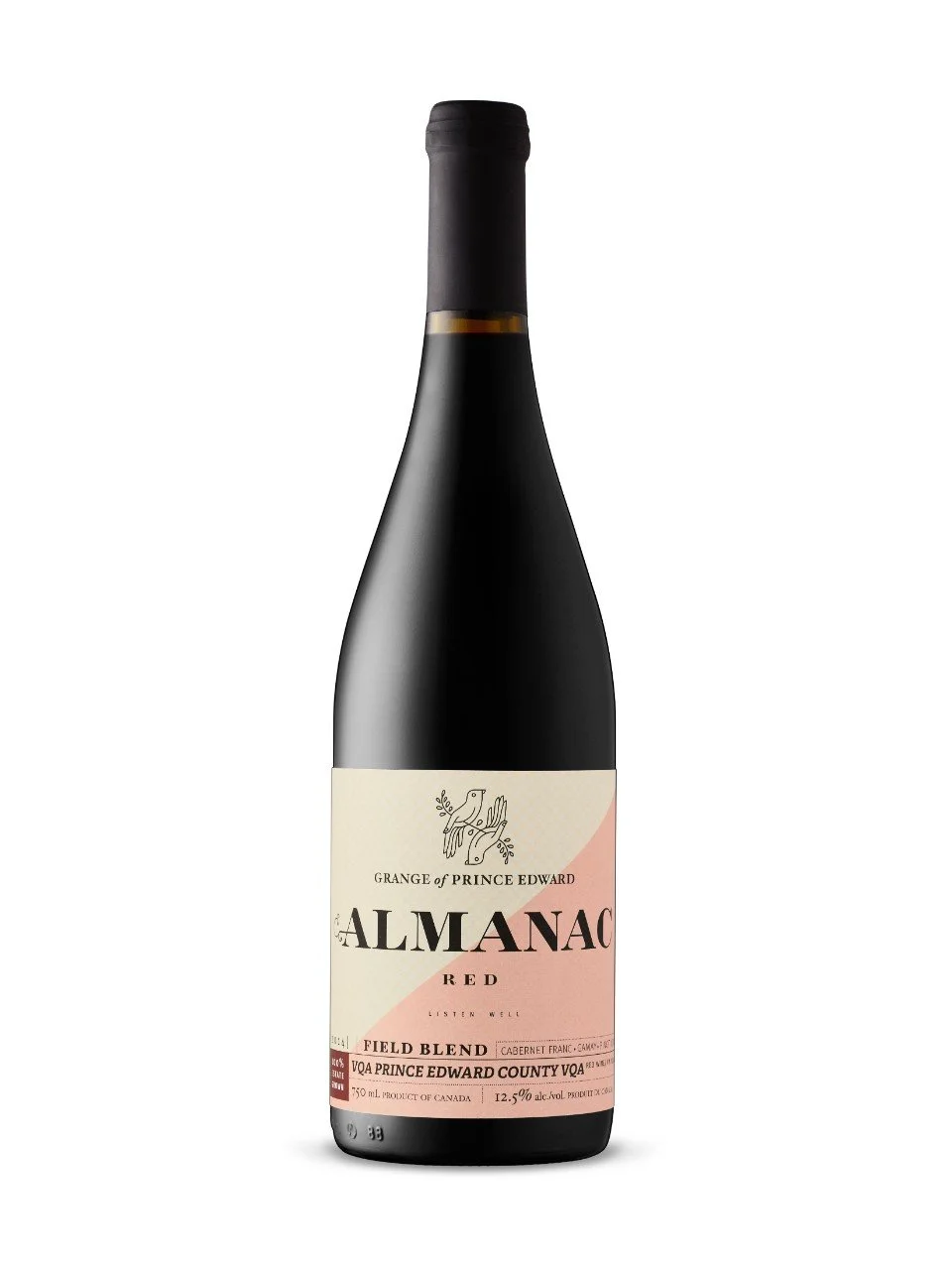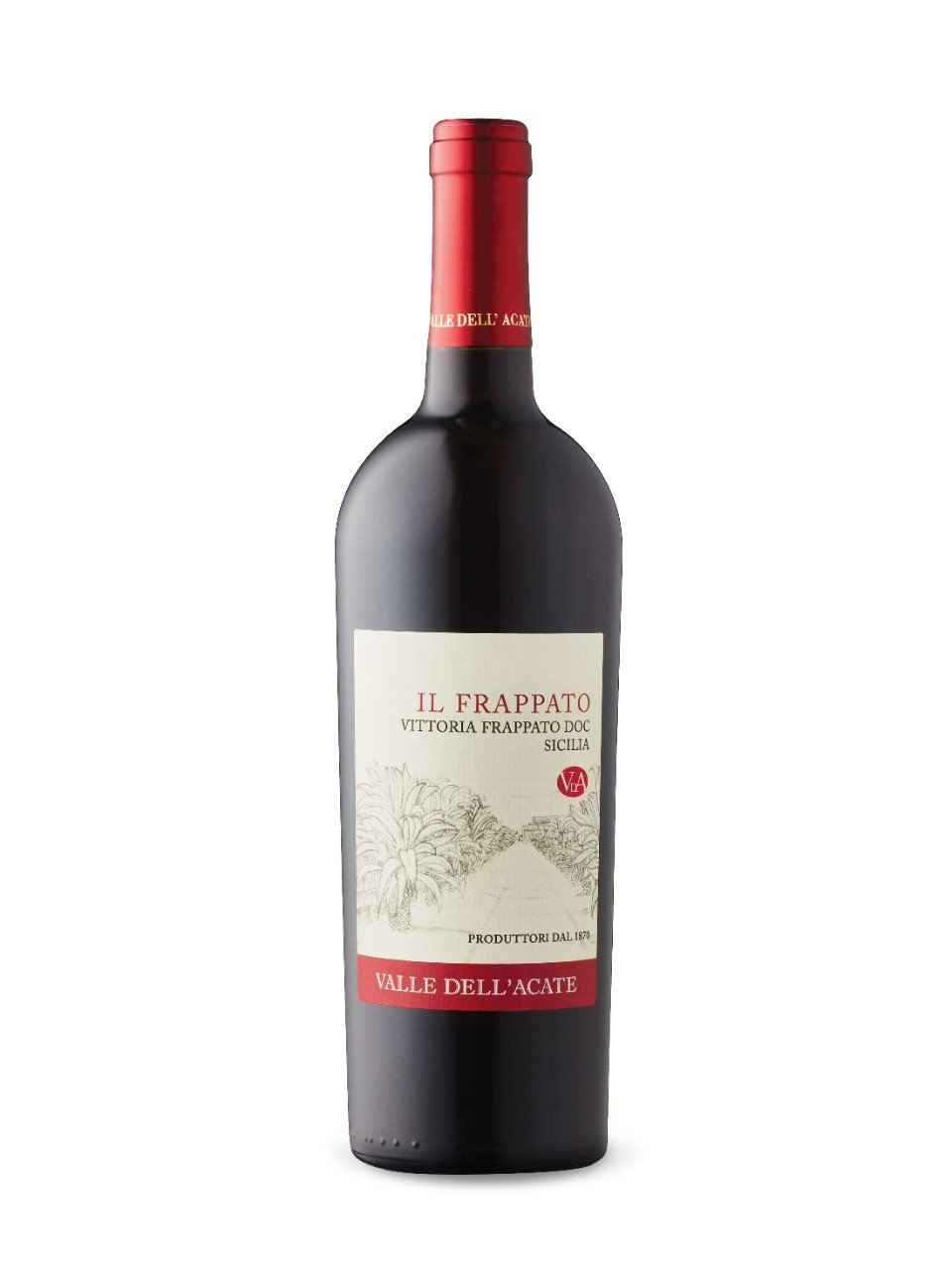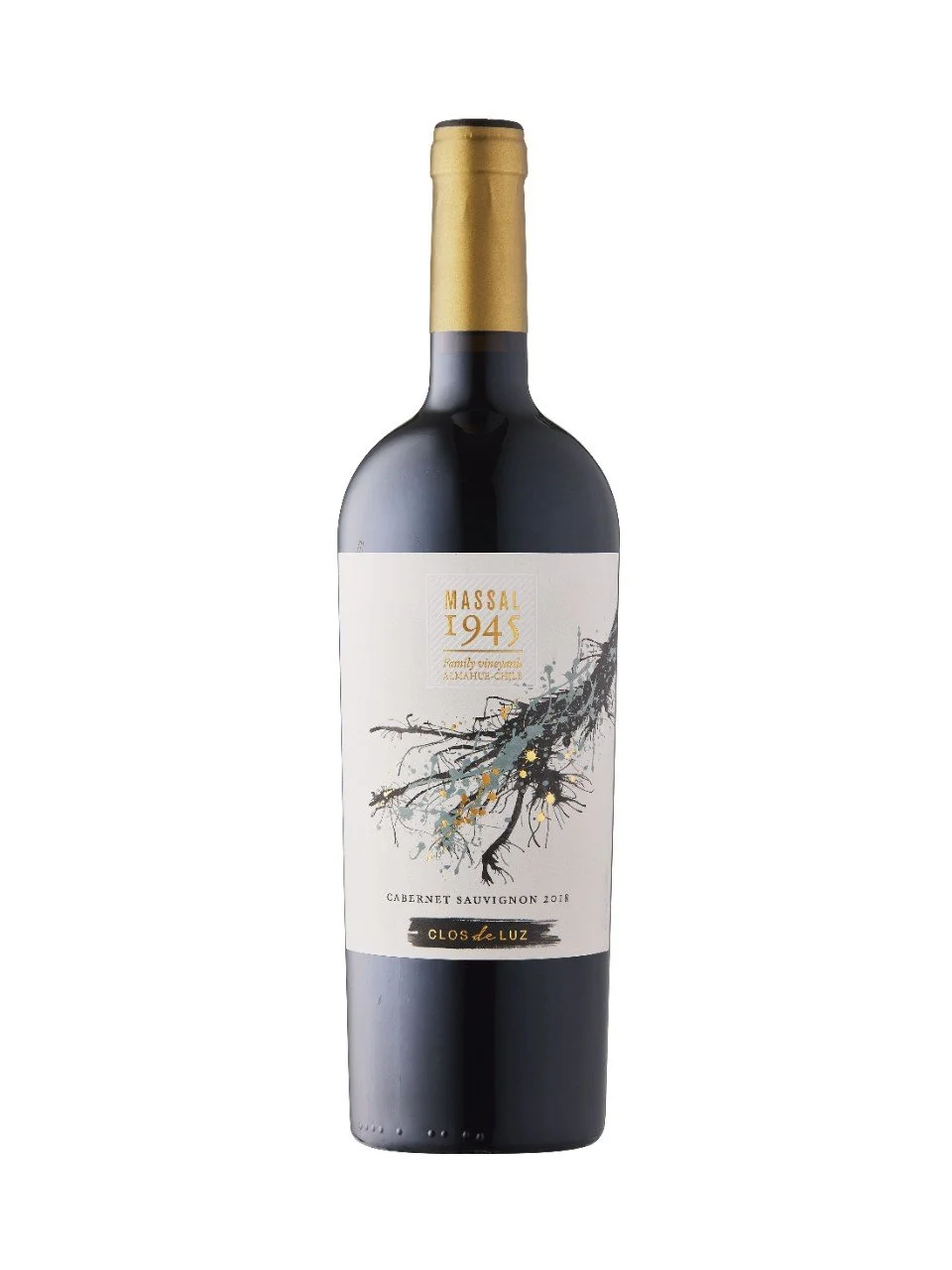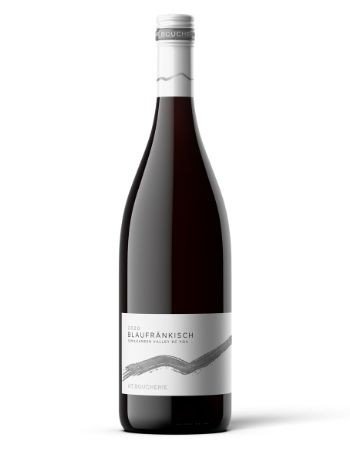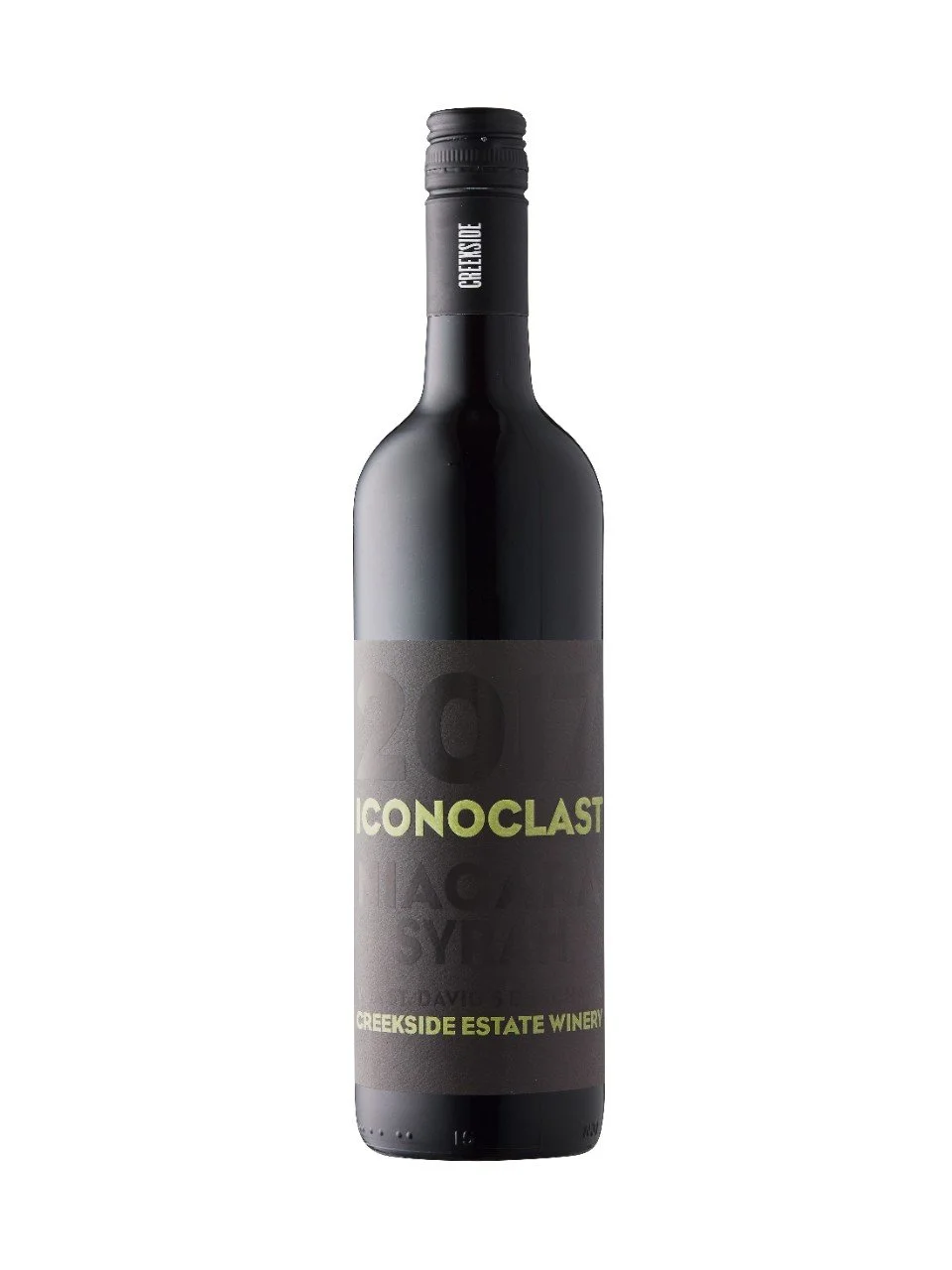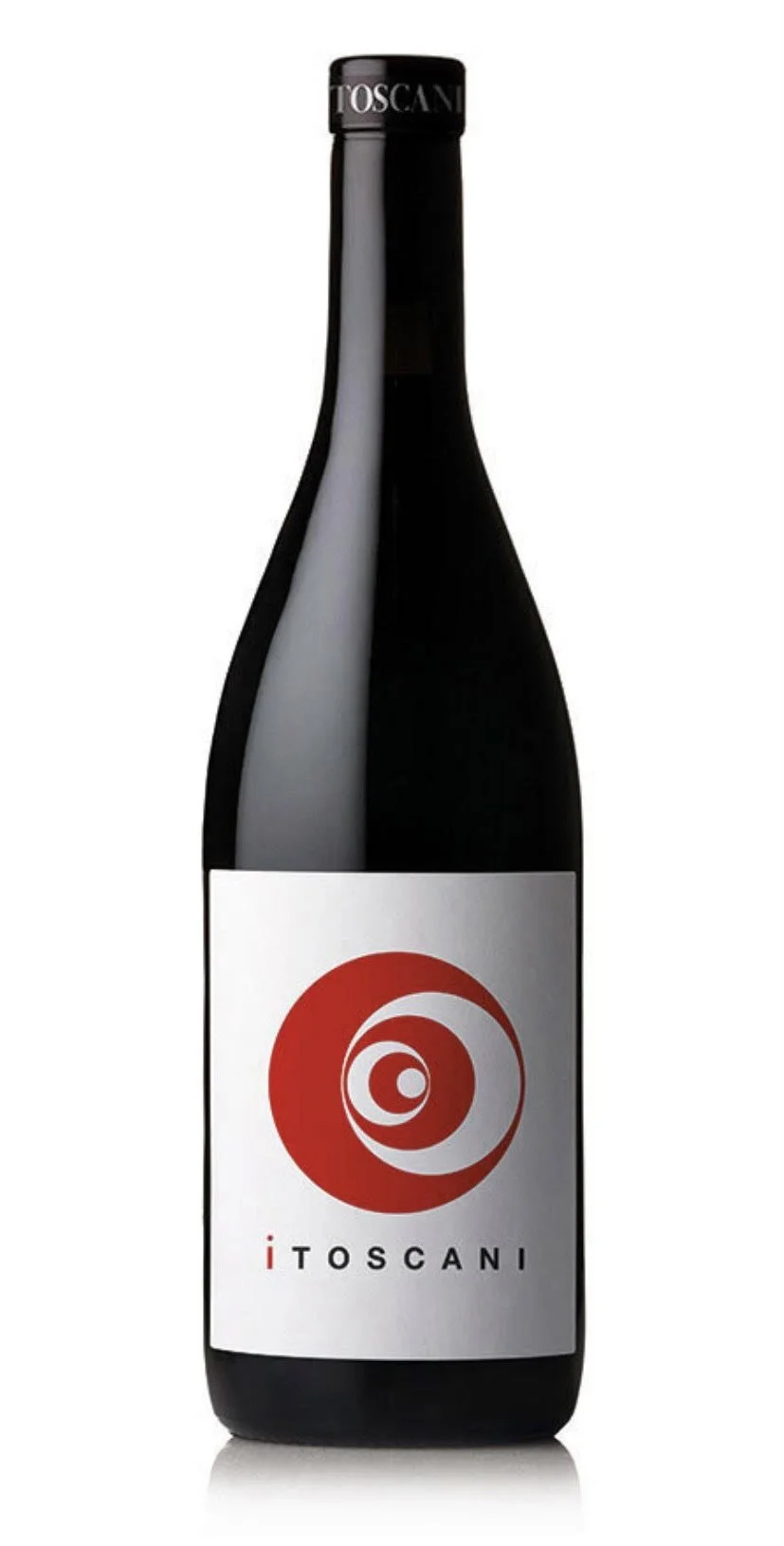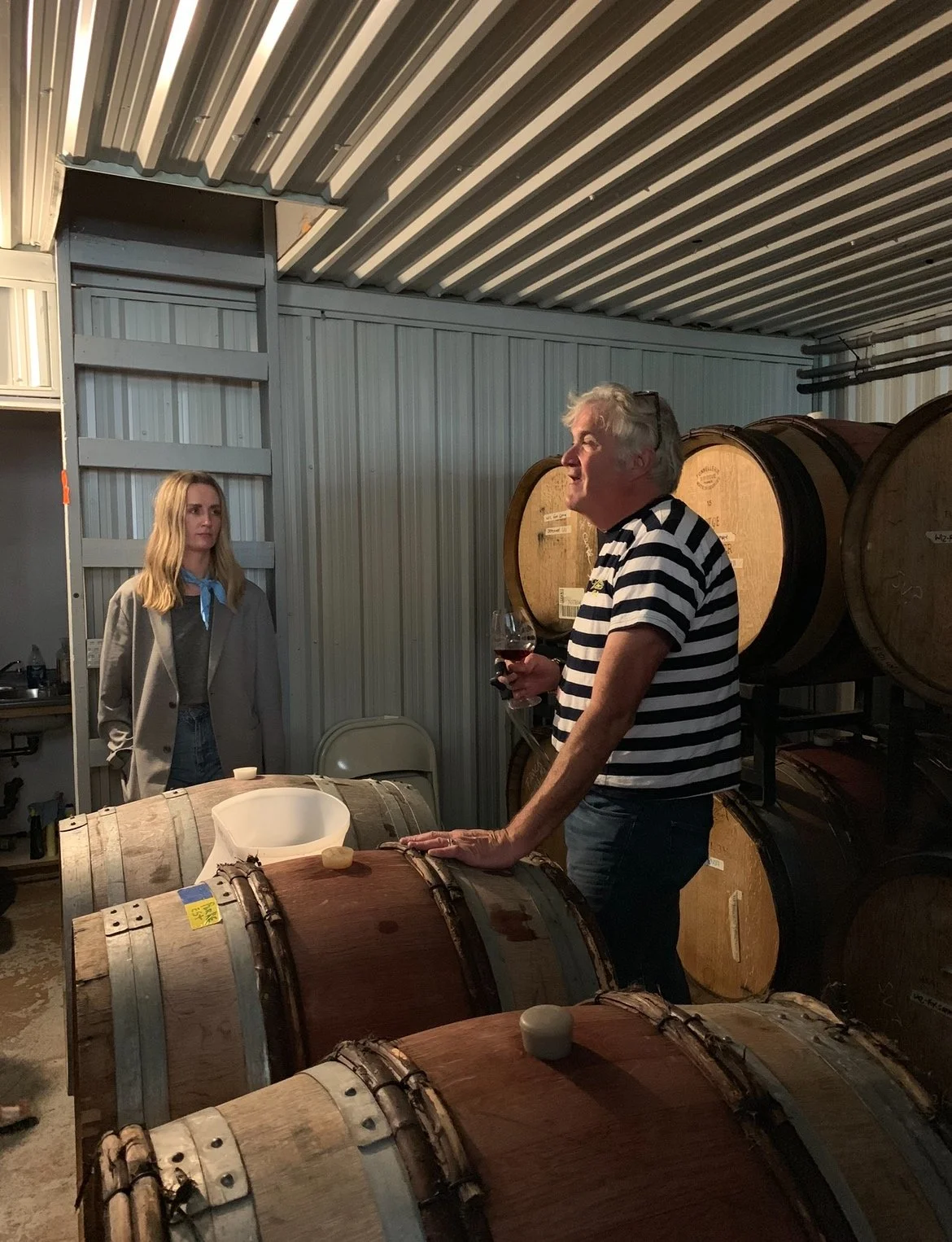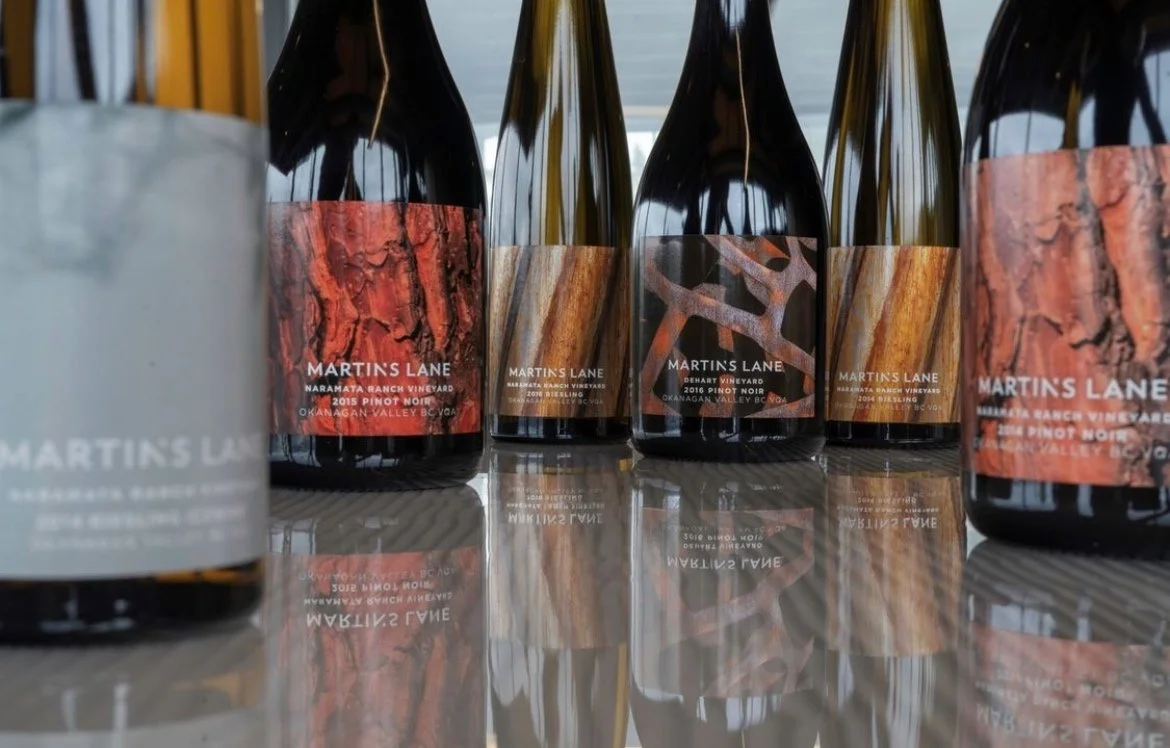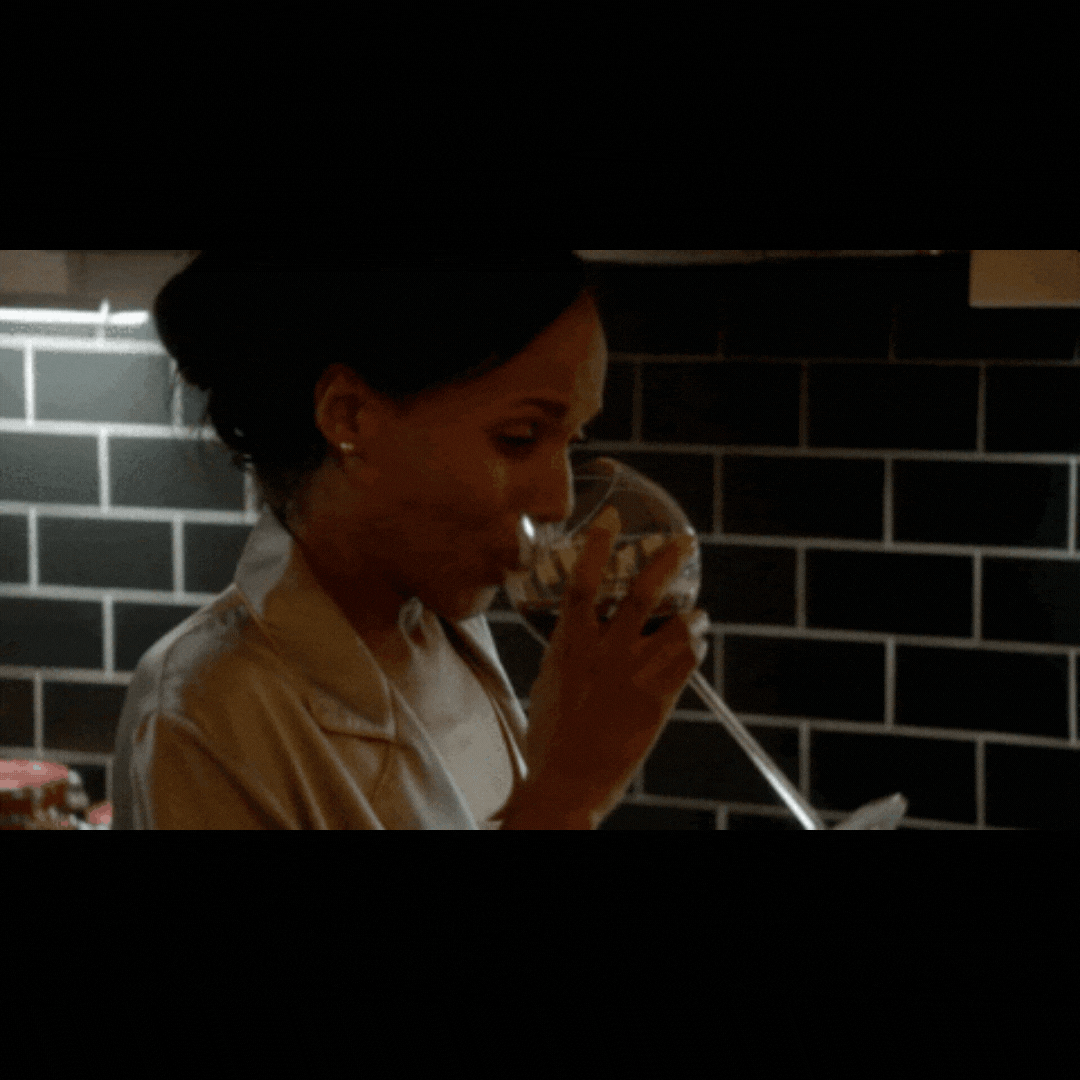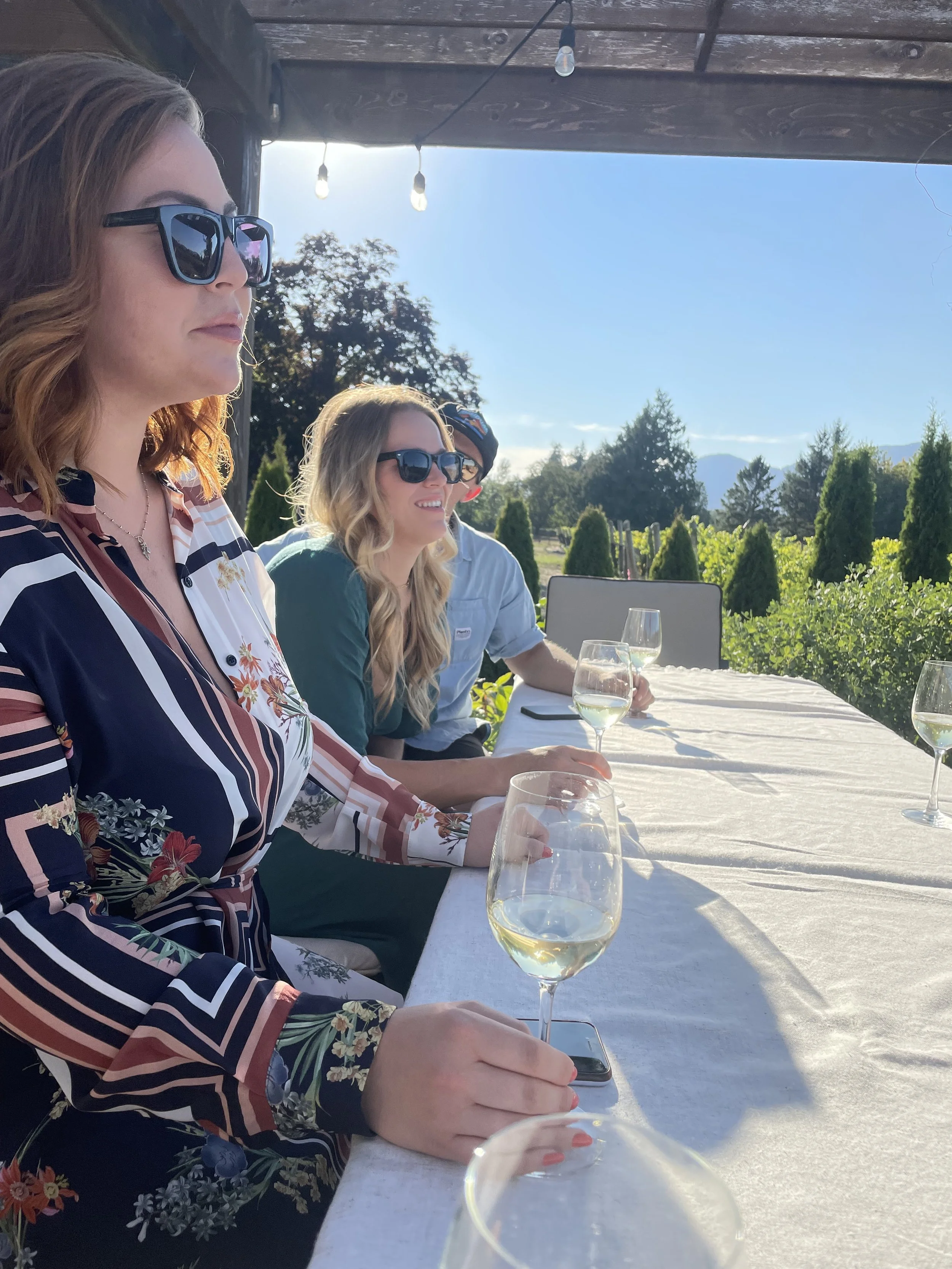Chef Joe Friday: The king of burgers
It was a busy Friday night in downtown Toronto and I was seated at the wood at Figo restaurant on John Street. I overheard a couple to my right discussing their upcoming reservation at Aloette; I knew I would be remiss if I didn’t recommend their killer burger with caramelized onions and cheese that is somehow both gooey and crispy.
I injected myself into their conversation and the lovely Joe Friday and Jackie Romanow welcomed my interruption with a warmth unusual for downtown Toronto. Naturally, I assumed they were tourists.
We quickly hit it off, exchanging business cards and immediately making plans to hang out, finding ways to collaborate, and brainstorming approaches to grow a likeminded community in Toronto.
Since then, we’ve partnered on several projects and have become great friends.
LM: You’re not originally from Toronto - you have quite a dynamic history having grown up in Okinawa as well as North Carolina, now calling Toronto home. How would you say these experiences have shaped you as a chef and how you approach your work?
JF: Growing up in two opposing cultures has helped me in many ways. I have a different view surrounding food. I was eating fusion before it was trendy, or before the term was even coined. The opportunity in Japan as a teenager was incredible. Since I moved there so young, I didn’t recognize the transformative nature of my experience.
It wasn’t until I moved to North Carolina 10 years later that I realized the impact. Although my parents cooked traditional southern food with a Japanese twist while we lived in Okinawa, it wasn’t like the culture in North Carolina. The BBQ was next level, the backyard cookouts, block parties and church dinners - everything revolved around old fashioned soul food.
These combined experiences, along with some independent travels, all attributed to me becoming a well rounded chef. Toronto is one of the most multicultural cities in the world, and it’s helped me become more comfortable sharing the different types of food and cultures from my life. I’ve hosted ramen, sushi and fusion pop ups, along with my on going pop up Charlotte, which I’m now sharing on an app called Cookin.
My real love is a good burger, which will be on display this coming fall/winter. Stay tuned for updates.
LM: We’ve talked a lot about the culture in Toronto, and the real lack of community and open mindedness. How are you working to change the landscape?
JF: This is something I’ve noticed from day one. It seems different from the vibe you’d get in Montreal, or even New York City. I find Toronto to be more about cliques. Montreal seems to be more like a community that embraces differences, with people who look out for one another.
Toronto alleges to be inclusive, so you’d think there would be more evidence of this claim - especially in the hospitality industry.
How I’m fueling change is by talking about it. I’m open to hearing new ways to bridge these gaps.
I started The Chef Collective, a company that gives up and coming chefs/cooks a platform to showcase their skills. This happens with a live audience in attendance. It’s much like watching a live sporting event.
It’s an opportunity for younger chefs to meet some of their role models, or have conversations with new people in the industry. I’d hope people take advantage of this to help build and improve the industry.
LM: You’ve been working as a private chef for awhile now - tell me about some of your best / worst experiences.
JF: I’ve had nothing but wonderful experiences. The private chef life is a good one - it’s for the true entrepreneur. It gives me the freedom to cook anything I want. I get to put smiles on peoples’ faces. Getting to know new people has been incredible. Ironically, I’ve made more friends working as a private chef for a brief period, than I have cooking in Toronto for ten years. Once I open my new restaurant, things will slow down a bit, but I’ll still take on a few new clients.
LM: How does wine play a role in the work you do?
JF: It plays a big role, especially when I do tasting menus or a coursed meal. A lot of customers ask me for my opinions on wine selection. Having a good knowledge of wine is crucial.
LM: Is there a demand for local wine?
Most people still want Italian and French classics, and I can’t really blame them as those wines have proven to be reliable. However, I have a lot of clients that are intrigued by some of the local natural wines. Since getting to know you more, it’s also helped improve my knowledge. I definitely recommend local when I’m asked. Ultimately, it’s all about education. We need to implore more people to consume locally. I tell all my clients what farms I get my products from, why not educate them in the same way about wine?
LM: Tell me about your new restaurant.
I’m opening a burger joint with a southern vibe. I absolutely love burgers - my Mom said her favourite food when she was pregnant with me was Burger King, so my affinity for burgers totally makes sense with this in mind.
I started my career flipping burgers, and now I get to share everything I love about them with my community. It’s called The Friday Burger company and it’s opening soon. I can’t really go into details yet on the location, but construction is slated to finish soon.
LM: You work with your amazing fiancé, Jackie Romanow, for many of your projects. Tell me about what it’s like working alongside your partner. What are your greatest challenges ?
Working with Jackie has been great; she is passionate and motivated to help me succeed. We have complementary skill sets, which allow us to work well together. I am a creative person and she is analytical and finance oriented. It can be challenging sometimes, as a creative, I have big visions that can at times appear very daunting to an analytical person like Jackie. But we work to blend my vision with Jackie's structured execution, so we can bring my visions to reality. With any relationship, romantic or not, communication is always something to improve on, so I would say we're always trying new strategies to make sure we're aligned and being effective.
LM: Who’s killing it on the Canadian food scene ?
I’ll give you my top 5:
Chef Patrick Kriss - Alo, Toronto
Chef Stiefenhoffer-Brandson - Published, Vancouver
Christie Peters - Pop Wine Bar, Saskatoon
Ron McKinlay - Canoe, Toronto
Chef Jason Bangerter - Langdon Hall, Cambridge
LM: What are some wines, in your opinion, that best pair with your favourite food - burgers ?
I’m digging Hot Rocket Pet-Nat from Traynor Family Vineyard in Prince Edward County, and 2020 Folklore from Nyarai Cellars in Niagara-on-the-Lake.
But, maybe we can go over some of your favourites on what to drink with a burger.
LM: You’re also starting a podcast. What is the theme and what message do you hope to get across to your audience ?
JF: The podcast is called FoodPolitico. Getting through this process has been challenging in a few ways. I feel I’m a person who has some things to say that people may not be open to hearing. I’ll be putting myself out there in a big way. I want to start conversations - I believe we grow that way.
I truly hope people see it in this light. We are in a different climate now, the hospitality industry has changed, we are now talking about food shortages around the world - there is so much to discuss. I want to be a part of the solution, and I hope my peers do also.
Follow Joe on Instagram here.
Vin Van: The pop up you need to know in Vancouver
It was the calm-before-the-storm in February 2019 when I had the chance to meet Stephanie Walker and Joanna Owen, the charismatic duo behind Vin Van. In a city where pretentiousness reigns, Steph and Jo permeate joy wherever they go.
It was at a party hosted in a Gastown loft, where we sabered bottles, played slaps like school children and danced all night that I knew they were two women I wanted in my network.
Since then, their project has grown, having recently acquired a Bolero camper van turned travelling wine bar, among other on-going events that continue to garner attention and sell out on the regular.
I had the chance to catch up with them recently to hear all about what they’ve been up to.
LM: How did you meet?
VV: Our partners played rugby together so we met on the sidelines as WAGS in 2016!
LM: How did the idea of Vin Van come about?
VV: It has evolved a lot over the years. The original idea was to bring some of the pop-up/supper club scene that is so prevalent in London (UK) to Vancouver, with a wine focus. We started out doing long table dinners and pop-up tastings in unique locations in Vancouver and in 2019, we started the wine bar, first at Fiore and now weekly at Dock Lunch.
LM: What is your ethos?
VV: All our evenings are laid back and fun and we are always up for trying something new! It probably drives people crazy as it's hard to keep up with all that we've got on the go. We focus on wines that are from smaller producers, often with a sustainable approach to their winemaking and farming, creating a wine list that has interesting wines to spark a conversation. We are big advocates of supporting local both with our wines and food offerings - we partner with different local chefs for our Tuesday wine bar evenings at Dock Lunch.
LM: Tell me about your latest projects/events/news.
VV: Weekly wine bar on Tuesdays at Dock Lunch.
Stompin' Grapes: A Monthly Wine and Disco night at the Ellis Building with an all female line-up of wine and cocktail bartenders and DJs.
Vivian the Vin Van - our latest venture - a renovated 1975 Bolero camper turned wine bar on wheels. Up for rent for private events around BC.
LM: How have you seen the industry change since your inception?
VV: Wine bars have become more prevalent in Vancouver - which we LOVE. There are now lots of great spots to find good wines in the city. It's awesome to see more people interested in learning and experiencing different wines. We've also seen more people do their own pop-up nights, utilizing spaces that would otherwise be empty in the evenings. Vancouver has also become slightly more open to business models such as ours. Still a long way to go, but things are on the up!
LM: How do you connect with your consumers?
VV: We are both on the floor at all our events - serving, chatting with our customers and telling stories about the wines we are pouring and the amazing local chefs we are showcasing each week. You'll also find us dancing behind the bar at our Stompin' Grapes evenings or rolling around in Vivian! We find it hard to imagine not being there in person at our events, we love connecting with our guests and have a lovely group of returning customers we now call friends.
LM: What wines have blown you away as of late?
VV: Roberto Henriquez wines from Itata Valley in Chile, really blew us away when we tasted them, had to stop ourselves from snapping up the whole line-up. The skin contact Corinto Super Estrella and the Cinsault were highlights. Local producers we've been loving lately have been Else (especially the Gew), Lightning Rock and Pamplemousse Jus and Kutatas from Salt Spring - to name a few!
LM: Who are some tastemakers/influential folks in the wine industry you think I should feature?
Yourself :)
Gael Mackie - This Way Wine
Maude Brisson - APÉRO
Simon Fallick - he is behind the scenes but is so supportive of people in the industry, especially people like us who have one foot in and one foot out (we both still have our 9-5 jobs) and who have more unique business models. He is one of the people behind the Ellis Building, The American, Hero's Welcome among others.
You can learn more about Vin Van here.
Birch Block Vineyard: foreclosed llama farm turned winery
Sarah and Murray Bancroft
It was many moons ago when I was still living in the Okanagan, that Sarah and Murray Bancroft invited me to their guest house in Kaleden, BC to hear about their new project, Birch Block.
Their goal was tout droit - make wine from honestly farmed grapes. It just so happened there was an adorable A-frame on the property they were able to repurpose as a guest house they now rent on Air BnB (book early, it sells out quickly) .
Quantities are small, and much of their releases are sold only in magnum (generally allocated to restaurants). As of late, they’ve been dipping their toes into the RTD category, releasing canned rosé and piquette.
I had the chance to speak with co-partner Sarah recently on how their foray into winemaking has transpired.
LM: How did you and Murray meet?
SB: We actually kind of met twice. First we met one spring evening at the political science honours reading room at UBC. SO nerdy. He was looking for a friend, carrying a Vespa helmet, and I answered the door. That summer we camped across France on a motorbike.
Murray stayed in France and I came back to do my Master’s and we lost touch for 6 years. Then one day I was having dinner with my parents at a restaurant on Bowen Island where they lived. The chef sent down a Kir Royale – my favourite drink. Turned out the chef was Murray and it was a set up by my mom. She got a lot of thank-you’s at the wedding.
LM: Wine is a notoriously expensive and extremely challenging industry to enter - why did you launch Birch Block with this in mind?
SB: Yes, everyone warned us that wine is a capital intensive industry. It’s a slow burn. We did buy our property from the bank (it was a foreclosed llama farm) about a year before land prices started skyrocketing, luckily. I’ve done a start-up before (in digital media) so know the perils of cashflow, so we try to find all the efficiencies we can, sharing staff and equipment with neighbours and friends. But we still think the rewards outweigh the risks—as long as they’re calculated.
LM: What's the significance of Birch Block?
SB: We had a big stand of white birch on the top vineyard block along the road. Ironically, all the birch in the Okanagan caught a disease this year, so it went to the chopping block. Now it’s a beautiful stack of firewood for the pizza oven.
LM: What are some of your favourite wine, food and travel memories?
SB: We got a guide to take us to the camel market in Morocco. They had these Berber tents where you sit on the floor at a little charcoal grill and you go buy your meat and grill it with argan oil and salted bread and musicians play the lute. My daughters and I were the only women in the entire place.
That same year Murray remembers convivial late night diners during vendange in Bordeaux with the team at Ormiale. Harvest coincides with hunting season there so they ate homemade wild boar terrine with beautiful bottles from Ormiale and nearby Château Le Peuy.
LM: What's your least favourite part about the wine industry and what are some suggestions to overcome it?
SB: Shipping wine is too expensive and we have to absorb the cost for restaurants and retail which eats up most of our margin. Consumers have come to expect free or subsidized shipping, too. Maybe the WeWork folks will come back from Israel and solve the shipping problem for North America with drones or light rail.
LM: What wineries in Canada are on your radar?
At this year’s Noir Fest at Averill Creek we drank some delicious pinots from across Canada. On our radar are Anthony Buchanan, Else and Lightning Rock from B.C., Thomas Bachelder from Ontario and Benjamin Bridge from Nova Scotia.
LM: Tell me about your background and how it eventually led you to where you are now.
SB: Murray still works as a chef and both of us have spent a lot of time travelling in France and being around wine. Murray has been making wine as a garagiste since his 20s, and both of us grew up going to the Okanagan in the summers and love the desert, so it was almost inevitable.
LM: Who in your opinion are some of the best and brightest in the industry at the moment?
SB: It’s great to see so many women taking big swings and making bold moves from Arianna Occhipinti in Sicily to all the female winemakers, cidermakers, viticulturalists and wine club operators (shout out to Crushable Club, Vin Van and APÉRO Maude).
LM: What's been in your glass these days?
Bubbles of all kinds, mostly pét-nat, crémant, and piquette. It’s side-stripe shrimp season in B.C. so we can’t help it.
Learn more about Birch Block here.
From orgy propositions to projectile vomit: an exposé on private wine tastings, and why I’ll never stop hosting them
I scrambled - very hungover and very late - knowing I was cutting it close for a wine tasting I’d booked for later that day. The instructions explicitly stated, “ensure you eat before arrival”. I had allotted exactly zero time to get there promptly, so food would have to wait. I banked on being a seasoned drinker, assuring myself that a few pours of wine wouldn’t do much damage. I threw on my previous night’s clothes and hopped in an Uber.
It was 2017, and I was on a solo trip in Portland, Oregon - a city I’d always been curious about and finally found the time to visit. When booking my Air BnB, an experience page popped up, showcasing various unconventional activities to try while visiting the city. Since I was travelling alone, this new feature of Air BnB sparked my curiosity.
Upon arriving at the venue - a dark, cramped, basement dwelling wine bar - I was a little unsure as to what to expect. The place was completely empty, accessed via a narrow alley and rundown stairwell. I was the sole attendee. The price was steep - $100 USD to taste a flight of wines - but I remained hopeful that I’d walk away having learned, or at least tasted, something new.
The interaction with the host, Jeff, was awkward at first. It turned out he owned the wine bar, and was also the winemaker of the bottles being featured. Since we were so close to the Willamette Valley, I assumed I’d be tasting a bunch of Pinot Noir and Pinot Gris. Jeff poured me none. Instead, he introduced me to obscure varieties like Savagnin Rose, which set the tone for the course of the tasting.
Once Jeff determined I wasn’t a total idiot - he opened up, and the conversation began to flow a little more freely. He graciously offered me top ups of any of the wines that had piqued my curiosity, was patient with his time and knowledge, and answered all my pressing questions with ease.
I left with several bottles I was elated to smuggle home and share with my wine friends - the Savagnin Rose would be the wine of the night at a dinner party hosted upon my return to Canada among a group of winemakers and sommeliers.
I’d always hosted wine tastings to some degree, being a part of the wine industry for the bulk of my adult life, yet I’d never encountered the style of tasting Jeff had hosted, nor had I ever seen anything of its kind advertised the way it was on Air BnB. It seemed to be about so much more than just the wine, and was nothing like any other wine events I’d attended - nothing like the scripted, choreographed tastings at wineries I’d become accustomed to. I didn’t realize it at the time, but I had tapped into an emerging trend about to redefine the travel industry.
Home stays and experiences have long been a part of the travel industry, appealing to the unconventional, those after something outside of the norm. Couch Surfer, Meetup, Craig’s List and even classifieds have provided a respite for mavericks and renegades after authentic interactions that offer a behind the scenes foray into how locals live, outside of the flurry of main attractions.
The late Jim Haynes - an ex pat who resided in Paris since the 60s - was renowned for hosting weekly supper clubs in his home every Sunday. It didn’t matter your background or social status - if you were keen to meet and connect with others, you were welcome. His goal was “to introduce the world to each other.” He hosted hundreds of thousands of visitors over the lifetime of his experience.
My own personal experience hosting tastings had consisted of a Kijiji ad targeting stagettes while I lived in Calgary. Most of the groups didn’t care to learn about wine, allowing me to pour relatively inexpensive bottles and make serious margins. I upped the ante when I partnered with a pole dancing instructor - I got the ladies lubricated, just in time for the pole dancing portion of the evening to commence.
Eventually, I tired of hosting bachelorette parties, akin to the exhaustion you feel after going on too many Tinder dates. I didn’t realize it at the time, but they depleted my resources instead of energizing them, because I was going about it all wrong - I wasn’t making the effort to connect with people on any real level.
My travels eventually took me all over the world - staying with families in Udaipur, a small lakeside town in northern India in the province of Rajasthan, visiting wineries in northern Slovenia, where I communed with friends and winemakers until the wee hours, passing around bottles we’d smuggled in our suitcases and smoking the local organic weed, and a homestay where I learned how to husk and roast my own Robusta coffee beans, the host, John and his family, happy to have us on their farm in remote Indonesia on the island of Sulawesi, in a small town called Rantepao.
These experiences began to accumulate and it suddenly dawned on me that my most cherished memories all had one thing in common - they had been hosted in someone’s home. I had been permitted a peek behind the veil, beyond the masquerade of the tourist trade. It provided an intimacy no 5 star hotel could rival, and before long, was what I began to seek in my future travels.
When I moved to Toronto in 2019, the thought had never occurred to me to host wine tastings in my home. I figured I’d find a job at some hot downtown wine bar, and sort out what I’d be doing with the rest of my life at some later date.
Upon meeting wine professionals throughout the city, it became apparent how poor the knowledge of BC wine was, and what an edge my experience and relationships with BC winemakers equipped me with. It was on a whim one random Tuesday, where I decided to enroll on the Air BnB experience host app, and listed a “Canadian wine tasting”.
Before long, I was slammed with bookings - hosting back to back tastings, sometimes upwards of 30 people per day. Yet, in spite of the success I was experiencing, I couldn’t narrow down a location - I tried various venues from a condo party room to a co-working space - knowing I hadn’t truly nailed that seductive energy travelers were after. The missing link had been hosting it in my home.
In my own space, I had full control of the music, lighting and decor. Ultimately though, it gave me the freedom to mix groups: putting strangers together at an intimate table, where they’d be forced to open up and share their stories. This is when the magic really started to happen.
A recent CNN Traveler article affirmed the allure of these encounters, via a Sicilian boat tour booked through Air Bnb experiences, where they observed how happy travelers are to share space with others: “when you're spending a week with the same people, especially family, it can be nice to mingle with others for a bit. Our fellow passengers, all from various parts of Europe, were such great company; we were laughing at jokes they'd made through the rest of the trip.”
I met people from all over the world: race car sports commentators from Germany, academics from Colombia, winemakers from Hungary, retirees from Kansas City. People wanted my information to stay in touch; in turn, they too wanted to host me in their homes just like I had done for them. At times, the conversations flowed so freely I’d lose track of time and realize certain guests had been at my table for 4 hours.
Though an overwhelming majority of the experiences were positive (allowing me to accumulate over 100 5 star reviews), the weird, and downright bad guests eventually came a-knocking, too.
The bad encounters weren’t only just uncomfortable, they were unsettling and downright gross. Hosting tastings in your home exposes you in a vulnerable way, relinquishing any sense of boundaries, so you’re really putting your trust in others that they’ll respect this fact.
One couple hired me to do a private tasting for them on a Saturday afternoon. When you host tastings in such an intimate capacity, you learn to read people really well, and it was evident we weren’t a fit. The conversation was taxing, and it didn’t appear they were all that interested in hearing about wine to any great extent.
About halfway through the tasting (I was counting down the minutes until we were done), the male half of the couple interrupted me, and inquired as to why I had so much nudity on my walls, followed up with, “now that you’ve given us your sales pitch, let me give you mine. It seems as though you’re pretty open considering all the nude art you have on your walls, so I’d like to pitch you our sex club.” The remaining hour was spent discussing the “lifestyle” (a moniker for swinging).
The worst experience I’ve ever hosted was with two young women visiting Toronto from New Jersey. The first indication that something was awry: they arrived 40 minutes late.
Something appeared very off, but I couldn’t quite pinpoint what until they sat down at the table, and one of the woman inquired as to whether the liquid in the water glass in front of her, was in fact, water. She took one sip, looked to her left, lifted her hand to her mouth, and proceeded to projectile vomit all over my walls, books, plants, couch and Persian carpets. To say the experience was traumatizing would be an understatement.
It would be unrealistic to expect that all the tastings I host are transcendent - I know that the bulk of them will be good, but not great. Some of my guests have now become dear friends, and I’ve received no shortage of job offers and opportunities.
The beauty of hosting such an unconventional experience is honing my skill of hospitality, learning how to talk to others, and connect.
So many of my guests arrive itching to discuss Covid and the political climate - this type of conversation gets boring quickly.
After a few glasses of wine, it’s pretty easy to get people talking about their families, favourite books, movies, or memorable trips they recently took. Before long, they sheepishly realize they’ve been regaling their life story to me. When this happens, I know I’ve done my job.
My initial purpose in hosting experiences was to expose as many people as I could to the bounty of Canadian wine being produced - and while that still remains a prime goal - an unexpected byproduct has been the fascinating education in human psychology.
If you’d like experience a tasting with me (I offer both in person and virtual tastings) you can book here.
A conversation with Creek & Gully cidermaker, Alyssa Hubert
Pulling into the Creek and Gully parking lot, dogs and children run amok, framed by a field of sunflowers quietly on the cusp of bloom. Sauntering up to the classic A-frame structure, a view over looking a glittering Okanagan Lake reveals itself, one that would render any cynic soft.
Amidst these vignettes you’ll find Alyssa Hubert, cidermaker, moving about with a palatable focus - cases of cider being packed for shipping, flatbeds prepped for transport, and fermenting bins cleaned and organized, awaiting the impending harvest.
Alyssa sports a vintage Blue Jays t-shirt, cut offs and Blundstones, an ensemble The Sartorialist might capture an off duty model donning, wandering Bushwick. It’s clear though, for Alyssa, function takes precedence over form.
There is a seriousness to Alyssa’s demeanor that is both intriguing and intimidating. The commitment to her craft is obvious, though her stoicism strikes as a charming veil, one that poorly masks her tenderness. It’s the final result that affirms her talent - you just don’t make cider that tastes this good haphazardly.
LM: Would you say your approach is similar to winemaking? Why or why not?
AH: I treat them the same. I’m still learning—and will always be learning—to make both beverages, and sometimes I learn different things about each of them as I work with them, but I treat them the same. I treat them the same because that's where my experience and my philosophy lies.
LM: Why do you think there is such a stigma to cider in North America?
AH: I don’t know if there’s a stigma to cider, or what you think that stigma is, so much as a lack of knowledge as to how many different ways cider can be produced. For the people who express a non-interest in cider, I generally see that in two parts. There are people who view cider as unserious, and thus deem it unworthy of their time, and there are people who think cider is only one thing—sweet, super fizzy, booze juice in a can. And, of course, these two reactions are wrapped up in each other, and the history of cider in North America. The vast majority of North American cider—in Canada and the US—is sweet, super fizzy, booze juice in a can, and has been that since basically WWI.
But, of course, around the world cider isn’t just that, and I do feel like, here in North America we’re learning that.
LM: What would you say is your greatest challenge as a cider maker?
AH: Dessert apples! Apples are different from grapes… And dessert apples are different from cider apples. At Creek & Gully we only use dessert apples so, I am constantly learning about this.
LM: What's your response to the naysayers or haters of the category?
AH: I don’t encounter haters, and for the most part people that say, “No, I don’t like cider,” just need to be prompted to try it. Or prompted into a conversation. And that’s no different than wine. People—we all—have ideas in our heads of what we like—what we think we like—and some people are just more staunch than others. At the cidery, in the tasting room, it’s easy to encourage someone to try—that’s what the tasting room is for, trying stuff, “You’re already here, just give it a try…”
And to recall your question above, for people that come with a preconception of cider that is unserious, I generally just talk about what we do—how we grow apples, how I make cider—in the hopes of letting them know that what we do is work, a skill, and intentional. I also joke that I don’t want ‘serious’ beverages all the time! I mean, who wants that?? Hah.
LM: Can you share a memory/experience since working with Creek and Gully that's special to you?
AH: Getting our first riddling racks was very special! It felt like with the racks what we are trying to make is more connected to history, or something silly like that. It was just a feeling.
Also, Anna and I went to pick them up, and one of our neighbours was also picking up some gear in a brand new fancy pick up—like two days old or something—and all the boys were just ogling this truck and not wanting to scuff it up, and then Anna and I just loaded five riddling racks into the back of her little tin-can 1999 Honda CRV. HAH!
LM: Let's play a game of speculation - what does your crystal ball tell you about the future of the Canadian wine & cider landscape?
AH: Ahhhh, that it’s in trouble…
The answer to this question, at least as far as I see it, is an essay—a series of research papers; Heck! A book! A series of books! (there are books I can recommend…)—about the confluence of a myriad of different socioecological forces, happenings, practices, and knowledges—or gaps in our practices, happenings, and knowledges.
We need to challenge our theories of the nature-culture relationship—they’re being challenged whether we look at them or not. While it is easy to agree that a reconceptualization of nature-society and the relationship between nature and society is needed, it is much harder to try and do this, as even posing the issue as one of dissolving the dualism, seems to reproduce the dualism which we are seeking to dissolve/resolve. If nature and society are active partners locked in an irreversible, continuing process of mutual determination, how is the materiality of these conjoined natures to be theorized??
I don’t have a positive—or easy—answer to this question, nor do I feel I can justly answer it.
LM: Tell me about your background - where are you from, where did you study, and how did you land in Naramata?
AH: Oh gosh! That seems like a lot! Which part do you want? I feel like I have a life in many parts. Hah! Does anyone else feel this way? Also, it really seems rather boring written out...
I grew up in very South-Western Ontario—in Chatham-Kent. My first job at 12 was detasseling corn and tying tomatoes! I went to the University of Guelph for both my undergrad and my masters—though I briefly started a masters at Western in between, I promptly dropped out before the Christmas Holiday—and lived there on and off for eight years. There are so many things I miss about Guelph all the time!
I don’t have any formal training in oenology. I’ve learned on the job. And while I’m not a farmer I have been working around agriculture for the last ten years, whether that was my masters—on the socioecological lives of small scale organic farmers and farms—writing environmental farm plans, or making wine and cider. I had brief stints in wine in London, UK, and in South Australia, both of which were incredible learning experiences!
How did I end up in Naramata? Oh, any number of things, just like anything else… I used to joke with people who asked me how I made it out West—because everyone asks that—that I read too many books and I followed a boy. Which is the truth in a way—I mean, the boy was a prompt—but much of what I read at the end of high school and throughout university—whether it was fiction or not, for school or not—featured the West, or getting to the West. And so I just read more. And I guess I saw myself in those narratives. Put myself in them. Was fascinated by them. So, West I went. As for Naramata, I rode into the Okanagan Valley from the Kootenays—I was travelling across the province on my bike for my masters—and I just thought it was an incredible place that I wanted to return to… (Though, honestly, when I took my first job out here in 2015, I still had no car and was riding my bike for everything, so I needed wherever I worked to have a shower… And so, my first job in the cellar was in Naramata at a place that had a shower…)
I can see that you’re going to ask me about dreams I have, and I’m not going to answer you, but I will say that I used to dream about moving out West, farming and making wine. Used to lie on the floor with friends and plan it out…
LM: What are some goals or dreams you've yet to achieve?
AH: Ohhhh! There are so many! But I keep my dreams pretty close to my chest. A bit out of superstition, and a bit out of some sort of self-protection. It feels something to the effect of, these things—these dreams and ideas—inside of me will exist there until I am ready to make them real. One day, I will take these things outside of myself and then they will become real. And I have to be ready for that.
LM: What are some of your guilty pleasure beverages and foods?
AH: Hmmm, well, I prefer to think of these things as indulgences rather than something I might feel guilty about… Something you allow yourself the pleasure of, whatever pleasure it is that that thing might give you, whether it is the taste of the thing itself, or the memory of the thing, or the fleeting moment of the thing…
Wine is certainly an indulgence of mine!
I love tonic water, and dill pickle chips. Sometimes I buy two litres of extra pulp orange juice and drink the whole thing in a morning, and when I was 12 I used to put cheddar cheese on triscuits and put them in the microwave to get all melty and slightly crispy… I love Ben and Jerry’s chocolate chip cookie dough ice cream, and Comté, and lemon curd. Also, all types of olives. All of them. I love my homemade hamburgers. And key lime pie with shortbread crust!
LM: Most talented/up and coming folks on the Canadian scene?
AH: All my pals! HAH. I don’t want to just write a list here; contact me for a list.
But really, we have—and I am fortunate to be a part of—a great community of people working out here in BC in this industry. Whether they are starting their own things or moving into larger roles at established businesses, and whether they’re farming, fermenting, or selling and educating—there are great people at all corners of this industry. I do wish that we had more of a cross-country connection in this industry. That would be so lovely! This country is just so huge, and this is such a located-in-place industry, I guess.
The Crushable x Creek and Gully pack will be available Thursday, July 21. Subscribe here.
Here’s why you need to be drinking cider
Credit: Creek and Gully
Cider could best be described as the guy who perpetually lives in the shadow of their famous sibling: wine. This clout, however, is somewhat nefarious - cidermaking predates its vinous counterpart.
Historically, it represented a significant chunk of booze consumption in North America. Prohibition led to the vast majority of orchards being wiped out. The earliest findings of hard cider date as far back as 55 BC.
Widely consumed throughout the UK and Europe, with Normandy popularizing the category as its signature drink. The Normans invaded northern France in 1066, bringing with them tannic and acidic cider apples, thus improving quality.
Cider is finally having its much overdue comeback, with producers popping up all over Canada (and everywhere else) - though the gulf between what’s commercially available and what dedicated cidermakers are producing is vast.
Here are just a few reasons why you likely need to recalibrate your (dated) beliefs on cider.
Cider is safe for celiacs to consume
It’s something few ever consider or discuss.
Credit: Creek and Gully. Cidermaker, Alyssa Hubert.
Apples grow easily in Canada
Canada is a cool climate - it only makes sense. Apples want us to eat and drink them!
It’s not fancy
Definitely not as snotty or intimidating as wine.
Credit: Creek and Gully
It’s low alcohol
You can drink more.
It’s affordable
Think: funky bubbles that won’t cost you $50.
Credit: Creek and Gully
There are entire zines dedicated to the category
Malus is a quarterly print journal self described as “ featuring bittersharp critcism and commentary”. Please be super meta and drink cider while reading.
Canadian cideries are not relegated to any “rules”
This freedom fosters creativity, flexibility, innovation and choice.
Credit: Creek and Gully
Apples and roses are related
Cute facts should be the motivation for all decision making. “hello, my cousin is a rose?!”
It’s a great way to repurpose/upcycle imperfect apples or fruit that would otherwise be destined as trash
Creek and Gully on the Naramata Bench in British Columbia, and Faraway Cider in Cumberland County, in Nova Scotia are resurrecting the category with fresh and modern styles.
The Canadian wines you should be drinking all summer long
Only absolute monsters order 15% ABV Malbec on a hot summer day. If you’re keen to try a variety of different styles for park hangs and beach days, read on for the most satiating accompaniments.
Lightning Rock 2021 Viognier Pet Nat
Somehow with each vintage, this wine keeps getting better. Think candied ginger and Meyer lemon. Best paired with fish & chips doused in malt vinegar.
Credit: Lightning Rock
Creek and Gully 2021 Crabby Pear
Cider, but hit with a dose of tannin and notes of quince. As serious as wine with a pillowy, fluffy texture.
Credit: Creek & Gully
RR81 2021 Gamay
Gamay that is as refreshing as water? Yes. This 10.5% stunner is so dangerously consumable, you might be concerned how quickly it disappears. Perfect with a slight chill (think cellar temperature), best for business lunches.
Credit: Erika Neudorf
80X 2021 When Pigs Fly
Made from 100% Pinot Noir from micro producer, 80X, serving us with yet another rosé that’s juicy, tart and fleshy that well over delivers for its price.
Credit: Wine2Dine4
Whispering Horse 2021 La Crescent
Is La Crescent one of Canada’s standout grapes? I’m calling it! This hybrid variety consistently wows imbibers with its deeply expressive nose counter balanced by a fresh hit of acid, with just the right amount of bitterness.
Credit: Whispering Horse
Venturi Schulze 2014 Brut Naturel
A crowd favourite - when poured at events and tastings, this is consistently the winner of the evening, from Cowichan Valley’s Venturi Schulz - a tiny family operation with a cult following of those in the know.
Credit: Venturi Schulz
Thorn and Burrow 2021 Gewurztraminer +
Orange and pink starburst, baked pineapple, peaches and cream. The palate follows with more of the same with added sour tropical tones.
Credit: Thorn & Burrow
CRUSHABLE is a Toronto based wine concierge featuring trending wine news and guides, wine tastings, wine club and wine merchandise. Enroll here to receive updates and purchase wine packs.
Thorn & Burrow wants to start a wine revolution
Unless you run with in-the-know circles savvy to the latest going’s-on in Canadian natural wine, it’s unlikely you’ve come across virtual producer Thorn & Burrow.
Owner Alex Thornley meets all the requirements positioning him with “it boy” status: he’s a transplant from England, he’s producing an entirely skin contact only portfolio, and he’s doing it at one of Canada’s winery darlings: Scout.
With a category as nefarious and trendy as natural wine, there’s an awful lot of mediocre wine and eye catching labels to wade through. It would be all too easy to cast off Thorn & Burrow for these reasons. Sexy marketing, cloudy orange wine, another handsome guy with an accent promising you that good good? It’s enough to render even the most idealistic of wine drinkers suspect.
Yet, chat with Alex for mere moments and any suspicion of yet another natural wine grifter all but disappear. Within minutes Alex will be waxing on about his incredibly diverse proclivity for literature, from classics like Yuval Noah Harari to pundits like Douglas Murray.
It’s apparent there’s substance, and a lot of it, and it all starts to cement why Alex would take on as challenging a category as orange wine: he’s the right guy to do it. Grace and humility are embodied effortlessly. Alex doesn’t flex his virtue: he just is.
LM: Can you tell me a little more about what drew you to wine, specifically? From starting off as a sommelier (why?) to eventually getting into winemaking.
AT: I originally took a gig in a wine shop here in Vancouver, I started reading, going to tastings, waking up my palate. I got offered a role at a new wine bar opening back in the day in Gastown called Salt Tasting Room. We had some talent there and I got further into the game, eventually I did some wine education courses but never really bit too hard into the conventional wine/sommelier culture.
This was at a time when the natural wine scene in Vancouver was in it's infancy, with legends like Brian Sohn (Racine) and Matt Sherlock (Sedimentary) being the only conduits of juice into the city. I got sick of picking my favorite tracks for guests to listen to and decided I wanted to learn how the music was made.
Matt was an inspirational figure for me and after a brief harvest at Nichol he suggested I get some international experience under my belt. I started the next few years of travelling and working with various low intervention and biodynamic producers around the world (NZ, SA, FRA) and a stint at Le Vieux Pin in the Okanagan where I helped launch their inaugural low intervention label Artakama after they let me play with some fruit (thanks Sev!).
I found traveling, meeting and working with some amazing producers was such a valuable experience. I've always been more of a get-out-there-and-do-it type rather than the conventional schooling approach.
LM: What challenges pose the greatest a struggle for you? How do you overcome them?
AT: As a small gorilla style producer without land or a winery, it's always hard finding organic fruit in an ever increasing competitive market. How do I overcome that? I'm not sure I have, hustling helps, having a few million dollars would also help. Investing in land and our own facility would be a solution but knowing a solution and executing are two different things. We looked further afield and took a lease on a small vineyard in Abbotsford where I can easily manage it from my base in Vancouver. Some fun hybrids on there, it may fast become a bubbles site for us.
LM: Can you tell me in more detail what your experience has been like at Scout?
Those boys are the best! I've been so so sooo lucky to land T&B there for the last few years. Their space is low fi with all wild yeasts so it's worked out well. They're a charming bunch of bastards and super helpful. It's been fun to bounce ideas around. As they grow in volume it might be time for us to fly the coup. Well, perhaps more of a fall from the tree and see if I survive the drop type of situation. Another of the main challenges for small guys like us is finding a production facility with the right aligned philosophies, but we've got some exciting leads. Watch this space.
LM: You’re British - any wineries on your radar from the region ?
AT: No. In a short answer. I've been out of that fun little island for some time. The wine scene 15 years ago was pretty non existent. There's a couple of natural guys though, Tillingham, I hear is doing some cool stuff. I'd love to check them out.
LM: What’s your long term plan? What does the future hold for Thorn and Burrow?
AT: Well we're just hoping to make better and better wine each year, as I hone my skills and palate, learn from the sites we have access to. As I said, finding a permanent solution to our production and vineyard problems is paramount. I'm keen to explore having something in Vancouver, there's so many well done urban wineries around the world, it's something that hasn't been executed that often here. I'm hoping the government will pull their fingers outta their arses and reform the liqour laws but I think we all know that goverments are rarely purveyors-of-change for the people. Hey, you fancy starting a revolution?!
You can purchase Thorn and Burrow wines here.
CRUSHABLE is a Toronto based wine concierge featuring trending wine news and guides, wine tastings, wine club and wine merchandise. Enroll here to receive updates and purchase wine packs.
Wine descriptors that probably mean you’re lazy and lack creativity
Before you bark up my tree about policing wine language (though I think a lot of people get off on doing that), I’m an advocate of free speech and implore individuals to describe wine in any which way they so choose. Take it from my Mom, bless her heart, who still calls rosé “blush”, little sweetie she is.
I will also die on the hill of describing very specific styles of wine as “slutty”. It just works, and it’s never going to be removed from my vernacular. (please taste Ramey Chardonnay)
It’s not that common wine descriptors are wrong, it’s that you’re beating a dead horse when you use them. The repetition renders them meaningless, akin to every human’s aversion to the word “pivot”. How many wineries have you visited where they told you their rosé is a great “patio sipper”?
By all means, keep using the verbiage you like - let’s be real, the people who don’t care will never read this - fill your boots, live your best life, self care Sundays!
Ultimately, there’s a whole world out there full of descriptors and terms just waiting to be plucked from the dictionary (aka thesaurus), why keep employing the same old garbage everybody else is regurgitating? The more flowery, the better!
Summer in a glass
We’ve all been guilty of using this term a little too liberally - sunshine in a glass is just within reach especially when there’s orange wine in the goblet - it’s just dated and needs to go away.
Glou Glou
French for “glug glug”, this was a formerly super cute way to describe wines with a certain smashability factor - effortlessly juicy bottles that went down the hatch all too easily. Much like any trend, it quickly lost its novelty.
Feminine/Masculine
Such a limited, boring and generic way to describe wine. There are myriad approaches when romancing a bottle, that fall far outside the binary of feminine vs masculine - a particular favourite of mine recently, was the comparison of pinot noir to ballet.
Elegant
The wine industry equivalent of having a “Live, Laugh, Love” sign hanging in your living room.
Comparing wines to celebrities and/or songs
The wine isn’t Beyoncé and it never will be.
Using varietal incorrectly
Varietal = adjective. “This Merlot shows varietal character.”
Variety = noun. “This grape variety is Merlot.”
Nervous acidity
Sommeliers everywhere heard this uttered somewhere a million years ago, had no idea what it meant, then made sure it appeared on every wine list, review and write up thereafter, forever confusing consumers.
Fruit Forward
It’s made from grapes. It should taste like fruit. Similar to describing food tasting like food.
Terroir Driven
Every tasting room employee June through September: “We haven’t even identified the characteristics of our site in any way, nor do we have any clue what this wine tastes like year over year, never mind it being identifiable blind for its localized character.”
Hedonistic
Ah yes, the enjoyment of the finer things in life. Do you also enjoy eating? Let me guess, are you a .... foodie?
CRUSHABLE is a Toronto based wine concierge featuring trending wine news and guides, wine tastings, wine club and wine merchandise. Enroll here to receive updates and purchase wine packs.
Ask CRUSHABLE: When are wine festivals coming back?
Dear CRUSHABLE,
When are wine festivals/trade tastings coming back? I’m dying to get back to in person events and tasting wine again!
Cheers,
A Keen Imbiber
Dear Keen Imbiber,
Aren’t we all? Now that the novelty of virtual tastings has officially worn off, the wine industry and consumers appear ready to get back together in person once again. Who’s missed the splash of spit buckets?!
Though uncertainty has reigned for the last two years, the toughest part of the storm seems to have been weathered, as event announcements drop in droves.
Here are a few events to check out in Ontario, Quebec and BC in the coming months of 2022.
Ontario
Restaurants Canada Show, Toronto,
May 9-11
Offering various tastings, panels and a sommelier competition. All info here.
Sensory Symposium, Toronto, Spring/Summer - exact date TBA.
An intimate panel of Canadian winemakers gathered for a salon. Intentionally small crowd is encouraged to participate in the discussion.
Cool Climate Chardonnay conference, Niagara, July 22-24
A focus on cool climate growing regions and varieties. More info here.
Raw Wine, Toronto,
November 16
Natural wine fair. Ticketing and location info here.
Quebec
Raspipav, Montreal, March 10-12
Wine festival hosted by the SAQ. Info here.
California Wine Experience, June 29, Montreal
California wine tasting, also hosted in Calgary and Vancouver. Other dates, location and info here.
British Columbia
Culinaire, Victoria, May 4
Local producers pair their offerings with local restaurants, ticket info here.
Top Drop, Vancouver, May 9-11
Featuring some of the best producers in Canada, back after an extended hiatus. Tickets not yet released.
Vancouver International Wine Fest, Vancouver, May 16-22
Seminars, walk around tastings and more. Tickets and info here.
CRUSHABLE is a Toronto based wine concierge featuring trending wine news and guides, wine tastings, wine club and wine merchandise. Enroll here to receive updates and purchase wine packs.
A Celebration of Oxidation
Contributed by Douglas Wregg
Thierry Puzelat
When I let go of what I am, I become what I might be ~ Lao Tzu
Only those who will risk going too far can possibly find out how far one can go ~ T. S. Eliot
“All the wines out there were oxidised.” Every syllable of the word oxidised was rolled with magnificent contempt by a master of wine, furiously channelling Edith Evans’s Lady Bracknell, and uttered at The Natural Wine Fair a decade ago.
We speak confidently about faults and flaws and yet these are not cut-and-dried issues. Wines that are truly oxidised (maderised, if white) are dying the moment they hit the glass. They are brown, rusty, musty and lifeless. Or weary, stale, flat and unprofitable, if you feel like quoting Hamlet. Wines where oxygen is a factor in the elevage – either overtly (think of the rancio Banyuls and Maurys of the Roussillon, traditional yellow wines from Jura, Oloroso from Jerez, Madeira, Marsala and classic Vernaccia di Oristano), or more subtly, (think Loire Chenin, Chateau Musar Blanc, some white Riojas, Med whites aged in demi-muids or foudres, and northern Italian whites and Istrian wines with a certain amount of skin contact) – not only last, but improve considerably over the course of time. Whilst I may enjoy uncomplicated fresh wines – they are as snapshots of bright fruit – I also appreciate the profound qualities of oxidative wines which are like paintings with a rich impasto of texture.
Yes, oxygen contact may confer fascinating secondary notes and layers of vinous flavour – it can help to soften and enrich the wine and bring forth aromas of honey, truffle, walnut, cooked pastry, humus, spice and toast, those seductively complex integral liaisons of smell and flavour that persuade one to return over the period of several days and discover something new in every sniff and slurp.
Yesterday, I drank a beautiful natural wine that was fresh, utterly vibrant and charming beyond belief. Throbbing with health, the flavours were clean and crunchy, the palate full of sap and zip with a trace of graphite minerality bringing the wine to an exhilarating close. This was real grapes-to-bottle stuff sans funk. This was an oxidative, low-sulphur wine. Cue reeling and writing and fainting in coils & general disbelief from sceptics. Yet I would venture that no-one would find such a wine remotely objectionable, and once enough people acknowledge that natural low-intervention wines are not only not “off”, but can be deliciously flavoursome, then we will have advanced the tenor of the debate.
Stefano Bellotti from Cascina degli Ulivi explains how this might be achieved.
“The other way we can do without sulphites is following the natural way of wine making using “managed oxidation” where oxidation is no longer viewed as a monster to fight but as a friendly component of wine. But this is only possible when using grapes of excellent quality. No yeasts, no enzymes, no vitamins, no salts. A natural fermentation and a careful use of lees. Lees contain many colloids that have an anti-oxidant and protective function but to do so, one needs to vinify in wood and that entails more effort and higher costs.
By using this method I have always produced red wines with no sulphites and a guaranteed stability of decades and lately I have also managed to produce white wines with no sulphites added that not only they are stable, but have – if anything – the opposite problem: they need a couple of years in a bottle to reach optimum harmony, a quality that they will maintain for several years thereafter.”
“Reaching harmony.” Slow and fluidic elevage yields wines that are not fixed fruit-bombs instead unveiling their personality by degrees. Mutability, in my book, is to be celebrated – glasses one to five give you a thoroughly different experience as the wine moves and changes shape. Oxygen aids this process – a wine may not be oxidised if the addition of air enables it to articulate its nuances rather than rudely terminating the fruit. Yes, it serves as a kind of “inoxulation”.
Decent Exposure
Meanwhile, numerous misconceptions abound about low-sulphur wines. One is that they can’t age because, deficient in sulphur preservative, they are unarmed to combat the process of natural decay. Whilst it is true that some wines are intended to be drunk in the freshness of youth (and are usually protected during their vinification by a layer of CO2), others have the wherewithal to last, having an in-built defence mechanism against oxidising: one thinks of wines made by Giulio Armani, Dario Princic, Frank Cornelissen, Josko Gravner, Stanko Radikon and Emmanuel Houillon – to name but a few. As difficult and ornery as the wines may be when first poured, exposing them to air usually reanimates them. First impressions are not always reliable either. I can adduce numerous examples of wines that most experienced tasters would logically write off as undrinkable, which, after a day – or three days – or five –find their natural balance. The proof of this particular counter-intuitive pudding is in the tasting. The wines are living things that evolve in their own time. It is often said that what doesn’t kill them makes them stronger. In these cases, due to O2, they have constitutions as strong as an ox.
The most obvious examples are to be found in the Jura where vignerons may either “top up” their wines or leave them to age under a veil of yeast. Because Jura is the spiritual home of the sous-voile style, and because these wines can age for decades, they are rightly cherished. Nevertheless, certain cognoscenti notwithstanding, they (the wines) are often seen as quaint ’n’ quirky period pieces.
Ox in and out of the box ~ The Arc of Jaune
What quirky wines! Cut yourself some nutty nutty slack and, if you’re suffering sotolon deficiency, pour yourself some liquid fenugreek…’ If you like your Savagnin or Chardonnay to have that sensation of “jaune” ne sais quoi, from a sojourn under a yeasty veil, you’ll love the uncompromising earthiness of these Jurassic wines. At just 50 hectares Château Chalon is home to the extraordinary vin jaune (“yellow wine”), made from the Savagnin varietal. The grapes are harvested late and then aged in small oak barrels for a minimum of 6 years and 3 months (although some producers age their vin jaune for up to 10 years in barrel). The slightly porous oak barrels are, by design, not completely airtight, and a considerable portion – nearly 40% – of the wine therefore evaporates over the years (the so-called “angels’ share”). No topping up is done. A thick layer of flor yeast, known as the voile or veil, looking like a white foam, develops on the surface of the wine and helps prevent excessive oxidation. This controlled ageing method, similar to that used for fino sherry in Spain, but in France specific to the Jura (and Gaillac to a lesser extent), allows the wine to acquire its distinct flavours, characteristic of walnut, almond, spice and apple, before release. This remarkable dry wine, at its best immensely complex and very aromatic, is best appreciated after at least 10-15 years in bottle and has the ability, in good vintages, to age for a century or more.
How to describe a typical Château Chalon? Green walnut, caraway, fenugreek seed, pickled ginger jostle for attention with a hint of medlar segueing into peanut brittle and salted caramel. The finish is taut, verging on stony-metallic with gripping lemon-grazed acidity and an amazing nuttiness that reverberates around the palate for such a long time. If Château-Chalon were a book it would be A La Recherche du Temps Perdu.
Air apparent and slow-cooked wines
Managed oxidation, the type of barrels, the quality of the lees, the temperature (and temperament) of the ferment (and the naturally-allowed malolactic) are part of the enrichment process. Natural vignerons in the Loire use long and slow ferments animated by strong indigenous local yeasts in large wooden formats, a kind of slow cooking that confers exceptional depth of flavour. Deliberately oxidative wines are made from Anjou to Touraine ranging from the sublime Chenins of Mark Angeli, Stéphane Bernaudeau & Jean-Christophe Garnier to the vibrant Romorantins of Thierry Puzelat, Claude & Etienne Courtois and Hervé Villemade. Jean-François Chene even makes Jurassic sous-voile wines that mature under a yeast veil for six years before release. All these growers’ wines may be marked by natural process, but the winemaking rarely impedes the expression of terroir. It is more as if the wines have breathed deeply and are truly fortified for their long journey and have secrets which will be revealed when they are good and ready.
In Champagne, Anselme Selosse (amongst others) has also drawn valuable lessons from Jura winemakers and exposes his wines to oxygen early in the winemaking process as he believes that this makes them more resistant to harmful oxidation in maturity. One of his favourite sayings is that ‘my wines and oxygen are good friends’.
Sue Dyson and Roger McShane in their excellent article on the subject cite Selosse and Patrick Javillier (below) as growers whose wines are positively nourished by exposure to oxygen during vinification.
“Another person who shares this view is Patrick Javillier who wine writer Clive Coates calls “the King of Meursault” – one of the top areas in Burgundy for the production of white wines. He also makes a superb Corton-Charlemagne. However his attitude to oxygen is different to other wine makers in the area. He does not mind oxygen and also sees it as his friend.
He presses his grapes in open tank presses where the juice and the must both make contact with the air and hence with oxygen. Once the wine is in barrels Javillier uses bâtonnage (stirring of the lees) to produce a richer, fuller, more complex wine. However this requires the barrel to be opened and more air to come in contact with the wine. Stirring the lees also allows sulphur dioxide and carbon dioxide to escape, thus reducing their role in retarding the effects of oxygen on the wine. He is willing to sacrifice some of the up-front fruit aromas to make his wines more complex and sturdier for the long haul.
But his quest for exposure to oxygen doesn’t stop there. After almost twelve months in wooden barrels he transfers the wine to cement tanks which allow oxygen to seep through into the wine for up to another five months.”
Sherry drinkers and lovers of Vin Santo, old-style Marsala and Madeira appreciate the deliberate oxidisation of wine. Although Vin Santo winemakers are moving away from the more traditional porous chestnut caratelli (barrels) where oxygen played its role over the lengthy maturation, it is still the oxidative notes in this wine that entice and intrigue.
Expectation colours perceptions of wine. When tasting a vin jaune, a sherry or a Marsala one is within a certain “umami-recognition-comfort-zone”. The oxidative clothes maketh the wine, so to speak. Even the aged white Rioja or the old-fashioned orange/mahogany-hued Châteauneuf-du-Pape will accord to preconceived views about how these respective wines might smell and taste. Encountered in other styles and grapes, however, the oxidative veneer strikes a discord, and the characteristic is judged as a fault. Examples here might be the aforementioned Loire Chenins, the foudre-aged wines of Pierre Frick and the terroir-specific Sancerres of Sébastian Riffault, but it all rather depends whether you think this particular character is an unhappy superimposition or part of the very fabric of the wine. The ox presence divides the critics and sommeliers – Bettane’s attack on the so-styled tarnished wines of certain Loire vignerons exemplifies a kind of dour prescriptiveness that so afflicts the wine industry – his opinion right or right. You might just as well argue that super-controlled ferments, high sulphur regimes and myriad other interventions have falsified wines by allowing inferior vineyards to produce unnaturally polished wines. The results of winemaking should not always be invariably construed as good or bad, right or wrong, oxidised (boo) or clean (divine), but seen as the culmination of a series of complex aesthetic and practical choices.
Back to indestructible wine:
We’re sitting on a bench in Sepp Muster’s winery. Sepp goes the fridge, pulls out a bottle and pours out a couple of tasters into our glasses. Smiling, he asked: “So, when do you think this bottle was opened?”
The wine was a light gold colour, nose restrained with a smidge of reduction. The palate coiled and crunchy. Although it tasted as if it has just been broached, I assumed that the point of the question was to illustrate the wine’s potential to live without preservation. I hazarded: Seven days?
Five weeks, was the response. Cue jaws to descend floorwards. And still plenty in the tank for this particular wine.
Nor was this an isolated frankenwine. One year later, at Andreas Tscheppe’s another fridge door was opened, and another Sauv wine proffered with the same question. Evidently, this was some Styrian schtick. Forewarned, I went for the five weeks decent exposure option, and this time I was correct.
So, these wines have the wherewithal to transcend the rapid ageing process, to take oxygen entirely in their stride. How is this possible? It is all down to grapes, low yields, careful handling and time. The Muster (and Tscheppe) vineyards have special properties and the vines are set up to grow grapes that have fantastic substance. These vines grow on lime soil, composed of solid clay silt, known here as “Opok” which results in warm “dense” wines with intense varietal aroma character. The vines look wild and primitive with their single wire trellising, a reflection of the original method of vine training developed by Sepp’s ancestors’ they rise high along chestnut wood posts and branch out at approximately 1.80 metres height. The one-year canes hang down from the wire as if bending towards the earth. This practice was developed to promote a harvest of physiologically-ripe grapes, the idea being that the energy of the vines goes not into creating a canopy of leaves but into the very substance of the grapes themselves.
Sepp echoes the simple mantra that we have heard so far that he does not wish to fashion his wines to any specific style, but rather allow them time and space to reach their own individual potential, referenced through terroir, soil character and vintage. It’s the classic hands-on, hands-off approach, emphasising awareness of tradition and the need for observation, seeking healthy vines to yield healthy grapes, and then allowing the wine to make itself in the cellar with the minimum of fuss. As he says with a smile when we enter the barrel room: “I don’t come in here very often.”
The cellaring process is where nature meets time. Spontaneous fermentation (with natural wild yeasts) in large format barrels, no temperature control, naturally occurring malolactic fermentation, nothing added, nothing taken away. The wine is aged (up to two years) to obtain the optimal maturity and harmony of the various flavours.
Phenolics in the juice, the energy of the vine being used not to promote vegetative growth, but to intensify aromas and flavours in the grapes themselves. The wine settles in locally made barrels and rests on its lees, gathering nourishment and strength and seasoned wood tannins, before being bottled without filtration and tarrying awhile. When the wine is poured, it will emerge complete from the bottle, with some reduction.
Last week I revisited various wines from Bozidar Zorjan, whose biodynamically-farmed vineyards lie on the Slovenian side of the border in Styria/Stajerska. These wines are made with grapes and…oxygen. The longer the Zorjan wines are open, the more they find their perfect temperature, the more complete they become. Phenolics do not simply derive from skin contact (there is a varying amount in the Zorjan wines), but something more profound, density in the very juice in which every part seems to touch every other, a liquid that radiates ineffable energy. We witness something similar in the Barral Blanc, an old vines Terret blend, where the juice goes brown and then self-clarifies during the maturation process. Once exposed to air, it seems to be virtually impervious; more than that it becomes more focused the longer it is opened as if deriving nourishment from the oxygen.
We’ve seen this topsyturvydom before in other natural wines. Once, a wine from Alessandro Dettori, when opened, was as brown as a forgotten mouldering apple, an unpalatable brew of sulphides and other “mercaptanny” unpleasantness, destined for the plughole of the kitchen sink. I had read, however, that this wine (and others of its ilk) often presented this odorous carapace initially, and that the miasma might blow off with extensive exposure to air. I didn’t believe, but as an experiment, I poured the brown noxiousness in a wide-brimmed decanter and left it. For three days, sans closure. Sans fridge. When I next looked at it I was gobsmacked. For starters, the colour had changed, the boggy turbidity replaced by a healthy golden glow. This transformation was mirrored in the aromatics, the sulphide fug was now rich golden orchard fruit leavened with salty minerality. The faults had been unfaulted. Truly, there were more things in wine heaven and earth than the text book might allow. This was one in the eye or on the nose, for the anaerobic, “hospital-corner brigade”, whose wine world is governed by microbiological determinism.
It is more important to understand the needs of the individual wine in question, than to recite conventional wisdom about decanting/carafing. But one thing – never confuse oxidation, which can be a noble, enlivening process, with oxidisation.
A Wine is a Wine is a Wine
Many in the trade are in jobs where they are ultimately responsible to the end product user – a spade should therefore be a spade – a Sauvignon identifiably a Sauvignon – there should be square wines for square times. But not all drinkers are square.
It is also presumptuous (but it happens in all walk of life where critics critique) to believe implicitly that one knows better than the artisan-vigneron. Just like drinkers and wine critics, artisan winemakers are certainly not infallible, but their actions in the vineyard and winery determine the final individuated personality of the wine. And the wines are usually the way they are for many reasons. Decisions, such as topping or not topping up barrels, how much sulphur to use, to push for malo or not, to let fermentation take its natural course, in other words, all the physical choices of winemaking, will influence the development of the wine itself. For me, however, the paradigm of good winemaking is knowing when to step aside and leave the wine to its devices.
When I see the fault-sniffers, reduction hounds and oxidation haters reducing (no pun intended) wines to the sum of the aromas they’re not sure about, I know that wine tasting has become a cognitive demi-science and lacks an emotional, instinctive dimension. One hears stories of growers like Teobaldo Cappellano who banished journalists from his cellars because of what he perceived as the invidious practice of marking wines rather than tasting the wines for what they were.
The Year of the Ox
I prefer to talk about flaws rather than faults. Faults do exist, of course, but they are terminal and devour the wine. Flaws may serve to highlight other aspects of the wine; their imperfections are part of the whole and are often beautiful in themselves.
“Oxidized flavours can be difficult if you’re not familiar with them. All the fresh fruit aromas and tastes diminish, making way for cooked or candied fruit; nutty, yeasty flavours; and a ton of complexity. Fans of these wines find their individuality and character is unsurpassed and, because of that, they are some of the most fascinating and compelling wines in the world.” Joe Campanale (Owner of Anfora Restaurant, New York)
Oxidative wines will not be everyone’s cup of slightly browning tea. But there is no reason to get aerated! Horses for courses, and all that. And it all depends on the wine as well, naturally. The wines do have something different about them and for those who have become attuned to the aromas, flavours and textures they offer a mixture of challenge, excitement and immense pleasure.
How wine crime can be combatted through the use of blockchain
Contributed by Andreas Batten
Most of us have heard of bitcoin or cryptocurrency - some believe it to be a “digital gold” - an imaginary asset kept on a ledger "somewhere" on the internet. Yet, most do not understand the technology behind it and how revolutionary it truly is.
For beginners, blockchain is a distributed ledger technology. These ledgers are maintained across many computers that are linked in a peer-to-peer network. With blockchain, no one entity or group of entities can control the ledger. In simple terms, this means it is impossible to fudge the numbers on a set of information that has entered the blockchain. Although this may seem like a simple idea, the applications are immense, and there are two blockchain projects that have massive potential to modernise the wine industry: VeChain ($VET) and Brave ($BAT).
VeChain Thor is a Chinese company that seeks to revolutionize the supply chain using blockchain. VeChain uses QR codes and will eventually use RFID chips (tracking chip) to verify the authenticity as well as the supply chain of a variety of different consumer products.
In order to prove authenticity of a certain bottle or vintage, a unique digital code stored on the blockchain, called an NFT (non-fungible token), can prove the authenticity of a specific bottle or object. An NFT is a unique digital signature.
For example, if a winery has produced 5000 bottles of a specific vintage, each bottle could be labelled with a specific NFT affirming its authenticity. NFTs cannot be replicated, eliminating counterfeits. Many apps are already in development which could scan a QR code on a bottle of wine guaranteeing its origin. In the coming years, apps like Vivino are expected to incorporate a QR code scanning feature that not only holds information about the wine, but confirms the authenticity.
Three major wine producers - Ricci Curbastro, Ruffino Wines, and West Wind Wines - are using the QR codes on the VeChain network to add the “My Story” feature to their bottles. The “My Story” feature allows the consumer to review the history of the wine all the way back to the vineyard, as well as providing detailed product information that usually could not be contained on a label.
In addition, since the QR code is created by the manufacturer and stored on the blockchain, it cannot be altered infallibly, proving the authenticity of the product. As counterfeit wine is a multi-billion-dollar industry worldwide, a technology that can guarantee authenticity of a luxury product on the blockchain has immense value. Partnerships with large luxury brands such as BMW and Louis Vuitton are coming down the pipeline. The potential to partner with many of the world's largest and most iconic wine producers is vast.
The 'Basic Attention Token' (BAT) is an open-source, decentralized ad exchange program. The platform is integrated with the Brave web browser; it is not possible to use or access it from any other browser. Brave Payments allow users to tip websites and content creators with BAT tokens - a form of cryptocurrency.
Notable publishers who accept BAT tokens include the Washington Post, The Guardian, Vimeo, MarketWatch, Barron's, and Vice. In 2019, The Brave browser is adding a feature that allows the consumer to fully opt out of all ads on the platform, or opt in to ads provided by the Brave browser’s new algorithm and pay you for your time in watching the ads.
Brave is a system that displays ads to users based on locally stored data, removing the need for third-party tracking. Brenden Eich, CEO and co-founder of Brave Ads also aims to “improve the economics and conversion of the online advertising industry, so that publishers and advertisers can thrive without the intermediaries that collect huge fees and contribute to web-wide surveillance.”
The hope is that eventually ads can be catered to the consumer while protecting their privacy. The goal - the consumer gains back a large share of the power in determining which advertisements they see, and how the publishers are rewarded. This has great relevance to the wine industry as users can tip their favourite wine writers, and Brave can provide a customised ad experience that is relevant to the consumer.
A lover of Sicilian wine would soon find their ad feed buzzing with relevant publications and advertisements. While the publisher would find a greater conversion to sale on advertisements, as the consumer is choosing to opt into the ads and are being paid to watch them.
Emerging industries like blockchain will greatly modernise many industries, wine included. Ultimately, the technology puts more power into the hands of the consumer in terms of knowing about the product they are consuming, as well as locating new products of interest online. Since it is in the interest of wineries to promote their products and verify their authenticity, these technologies are likely to be adopted in the not so distant future.
Affordable red wines that don’t taste like Apothic
CRUSHABLE is a Toronto based wine concierge featuring trending wine news and guides, wine tastings, wine club and wine merchandise. Enroll here to receive updates and purchase wine packs.
A quick peruse on Google shows some of the most searched categories in red wine are the following:
-best cheap red wine
-best red wine under $20
-cheap sweet red wine
While searches of this nature are nothing to be ashamed of; they’ll likely bear results low in quality.
What consumers need to search for is QPR - quality-price-ratio.
There’s a reason wine professionals often reach for options from Italy, Spain, and Chile - these regions offer high QPR. It’s a category unto itself; offering pedigree at a reasonable price tag, preventing sommeliers from having to acquiesce to cheap, adulterated swill.
While it’s not a hard and fast rule, it’s a good place to start.
The affordable unicorn is the wheelhouse of any savvy sommelier building a wine list. By-the-glass options masquerading as expensive merits clout and profit.
There’s just no need to spend money on poor quality wine with the abundance of options available - you just need to know where to look.
From $15 to $30, there are quality made wines for every budget. All skus mentioned are widely found at most retailers, unless otherwise stated for direct order from importer or winery.
$15-20
Domaine Lafage Cuvée Nicolas Vieilles Vignes Grenache Noir
Marotti Campi Orgiolo Lacrima di Morro d'Alba Superiore
Francois Villard Syrah
Sella & Mosca Cannonau Di Sardegna
Grange Almanac Red
Bodega Pirineos 3404 Red Blend
* available direct from agent (in Onario) All The Right Grapes *
Possente Nero D’Avola
* order direct from agent (in Ontario) Bespoke Wine and Spirits *
Valle Dell’Acate Il Frappato
Flatrock Pinot Noir
Clos de luz Massal 1945 Cabernet Sauvignon
Creekside Iconoclast Syrah
iToscani
* order direct from agent (in Ontario) Drink Better *
CRUSHABLE is a Toronto based wine concierge featuring trending wine news and guides, wine tastings, wine club and wine merchandise. Enroll here to receive updates and purchase wine packs.
Ask CRUSHABLE: What Ontario wineries are rocking your world lately?
Dear Crushable,
We’re escaping to Niagara next weekend to visit our in laws. What Ontario wineries are rocking your world lately that we must visit?
Cheers,
Ontario imbibers in search of good drink
Dear Ontario Imbibers,
Kudos to you for visiting wine country in the winter. It’s one of the best times to visit, even though it might not be obvious at first.
Tasting rooms are quieter (re: empty), usually the owners and/or winemakers are the sole people kicking around, and they’re happy (aka relieved) for human interaction - especially the type of consumers who venture into wine country during hibernation. These folks tend to be more curious and educated consumers, and also spend more dough on wine.
Here are a few suggestions for wineries/winemakers who will take private tasting appointments. Be sure to mention Crushable when you reach out!
Thomas Bachelder
A visit to the “bat cave” is a must for any keen wine enthusiast. Widely known as one of the greats of the region, you’ll see why if you ever visit Thomas - he is truly in his element in the cellar, waxing on about varying percentages of whole cluster fermentation, inter weaving poetic analogies from his life. Expect to hear soliloquys on Pinot Noir and ballet, for example - a nod to his wife who was a former ballerina.
Edit: visits are currently on hold. Interested folks are encouraged to sign up to the mailing list to be notified when tastings re-open.
Malivoire
For the Gamay lovers. Malivoire has established itself as one of the benchmark wineries in Niagara producing marquee examples of the variety - from juicy, everyday drinkers to more serious, compelling styles showcasing the diversity and complexity Gamay has become lauded for. Winemaker Shiraz Mottiar is also an incredibly easy going, lovely guy, who’ll make you want to stick around just to hang out with him.
Maenad
Sometimes you just want to kick back with a winemaker who is not so serious. Maenad is a project born from the mind of Yvonne Irvine. Vibrant and fun skin contact Chardonnay, piquette and pet nat epitomize the spirit Yvonne embodies. Currently, Meanad operates as a “virtual” winery, meaning no actual tasting room exists, though it is Yvonne’s dream to eventually offer in person tastings with a focus on authenticity and low key vibes. Reach out to see how you could set up a visit.
Two Sisters
Sometimes recommendations come solely based on the excellence of one person, and in this case it’s assistant winemaker Emily Royal. I had the pleasure of visiting Emily recently in Niagara, who dutifully and patiently took me through the Two Sisters cellar, showcasing everything from very traditionally made cuvees to more contemporary experiments she’s been playing with. Be sure to request Emily when you reach out - you’ll be happy you did.
CRUSHABLE is a Toronto based wine concierge featuring trending wine news and guides, wine tastings, wine club and wine merchandise. Enroll here to receive updates and purchase wine packs.
Ask CRUSHABLE: Are the wines from Martin’s Lane worth the hype?
Credit: Martin’s Lane Winery
Dear Crushable,
Is Martin’s Lane winery worth the hype?
Regards,
Skeptical and Thirsty
Dear Skeptical and Thirsty,
This question is best left to Martin’s Lane winemaker himself - Shane Munn. I reached out to him after receiving this query, and here’s what he had to say on the topic:
“I’d say our Rieslings and Pinot Noirs are as interesting and complex as any other producer in Canada at the moment. And, as transparent in terms of viticulture and winemaking as any other winery as well. Transparency is as important to me as quality.
I can understand the perception of the wines as over-rated. It comes with the price tag, I guess. Those thinking the wines are over-rated likely haven’t tried more than one wine. The inspiration isn’t our neighbours, though.
Reaching further afield is ultimately our goal. I’d say stylistically our Pinots sit happier alongside those (better ones) from Oregon. The Rieslings are certainly European inspired but the individual vineyards often present wines that have quite a different feel. Our Naramata vineyard is richer and more plush (think Alsatian), than the more mineral, acid-driven West Kelowna Fritzi’s Vineyard (think Rheingau/Rheinhessen).
Honestly, I think they’re worth it. Sure, the production costs are high, but the focus and detail in everything we do is very precise. Ultimately, though, it’s about intent. From starting at where we want the wines to be priced to sticking with it because we truly believe they’re worth it. I actually reckon there’s great value in our wines. They’re scarce, and will become more and more so as we grow.”
It might be time to go and snag a case and decide for yourself!
Cheers,
CRUSHABLE
CRUSHABLE is a Toronto based wine concierge featuring trending wine news and guides, wine tastings, wine club and wine merchandise. Enroll here to receive updates and purchase wine packs.
Foolproof ways to find an amazing bottle of wine
How can you be sure the wine you’re buying will be delicious and of sound quality?
Endless studies have shown the majority of consumers select wines based solely on label. Other research has identified a correlation between attractiveness of label to better tasting wine. This would be akin to thinking a pretty label makes pasta sauce taste better. Sounds ridiculous, right? Why, then, does this happen with wine?
Lest you expect me to start railing on about ignorant consumers - this trend happens just as much with wine professionals. Mere minutes scrolling on Instagram points to a plethora of accounts rife with bottle shots - this is especially the case in natural wine, where label aesthetics appear to be just as important as the juice itself.
So, how does one navigate the confusing and intimidating landscape of wine?
Here, a few surefire tactics to ensure you come home with something tasty and memorable while on the hunt - none of which have anything to do with the label.
Ask staff what they’re excited about
I know, this probably makes you squirm. The thought of going to a wine boutique full of scary wine people was the stuff of nightmares for the bulk of my wine rep career. All kinds of vernacular that fly right over your head coupled with seemingly arbitrary and strange debates over inconsequential topics like whether sherry is oxidative or aldehydic. (yes this actually happened to me once and my boyfriend exited the store out of sheer fear.)
Remember: this just happens to be their area of expertise. Ask what they’re excited about, new stuff just received in store, or give a price point or food pairing to make suggestions based off of.
Remove the judgement and the mystique of what you think a snobby “wine professional” is and you’ll pretty quickly realize they’re simply nerdy humans elated to share their insight with you.
Check consumer reviewed sites for various opinions
Caveat: there are people out there who will cringe at this suggestion. In fact, there’s an entire meme culture centered around making fun of apps/sites like Vivino, Wine Searcher, Wine Berserkers (present company included).
There’s validity to the skepticism - how many wine reviews do you want to read by boomer, Dick, and his thoughts on Cupcake Merlot?
Feedback from various demographics however, can be helpful and point you in the right direction, likely diverting you from buying a mediocre bottle.
Seek out wines that farm responsibly
“Responsibly” has emerged as a catchall to avoid the greenwashing that occurred with sustainable. Much like natural, the definition of such terms became nefarious with overuse.
Responsibly generally points to: leaving the land better than found, limited use of pesticides, insecticides, herbicides and fungicides which impede soil health and seep into ground water. Think of it as an holistic, symbiotic approach to farming.
While there’s no certification for “responsible”, there are various stickers indicating how the land has been farmed - look for organic or biodynamic (often labelled as Demeter) - as a start.
Look for regionally certified wines / bottles with “table wine” status
A relatively new concept adopted in Canada, coined Geographical Indications in BC and appellation of origin in Ontario has been commonplace in Europe for some time. This assures the purchaser that the wine is confirmed to have come from the land it’s labelled as, produced under strict measures as per local law, and points to a hierarchy of quality that reflects local style, yield, and aging time. A marker from Italy, for example, is “DOCG” (Denominazione di Origine Controllata e Garantita) - this label guarantees a superior quality of wine.
Because these systems can be so rigid, certain winemakers opt out and choose to label their wines as “table wine”, giving them the freedom to work with non-autochthonous grape varieties, aging in vessels of their choice, or taking stylistic direction not the norm for the region. Italy labels these types of wine as “VDT”, meaning “vino da tavola”.
Any country with a designation will have their own system and acronyms that indicate various levels of quality.
Slide in the DMs of winemakers
Likely the most surefire tactic to use. While we can all agree on the off-the-charts toxicity of social media, the OG intent it was designed for still exists.
Remember, wineries wear a lot of hats: human resources, marketing, farming, design. Often, tech sheets and information on wines simply don’t get updated due to lack of resources.
Find out who the winemaker is, and reach out on social media. Assuming it’s someone active and savvy, you’ll likely hear back relatively quickly.
This is direct, to the source access, and the winemakers who respond will give you more information on their wines than you could have imagined, including where to find them and how to buy. (points for buying direct!)
Learn about standout vintages
Every region experiences perfect harvests resulting in wines for the ages - bottles born from pristine seasonal conditions bearing exquisite fruit that went on to make weak-in-the-knees offerings.
2005 and 2015 in Burgundy are lauded as magical.
2014 and 2020 are celebrated years in the Okanagan.
2015 and 2016 are vintages destined to age extensively from Brunello di Montalcino.
You get the idea.
Find a region you love, and learn about the years that produced exceptional quality - it’ll become an addictive habit, and an easy marker when scouring for bottles.
Buy Local
If all else fails - support your local wineries. Visit the tasting rooms, drink the latest releases, and remember to buy directly from them so the revenue goes in their pocket - not the sales reps, or local monopolies.
CRUSHABLE is a Toronto based wine concierge featuring trending wine news and guides, wine tastings, wine club and wine merchandise. Enroll here to receive updates and purchase wine packs.
Sex and wine: where progressivism and misogyny collide
Note to readers: this was a commissioned piece for another website I opted to pull out of. As I spoke to women, researched, and expanded my own beliefs and views on this very nefarious topic, I realized the voice was too personal - and complicated - and that self publishing was the only option to preserve my integrity.
In the current climate of for or against, lazy debating reigns. Agendas rooted in zero sum games posit clear winners and losers, that wield progress as the goal.
Such is the case for the ongoing discourse of sex in wine marketing. The nagging question looms - is it empowering or degrading?
On the one hand, the pearl clutching old guard argue bottles nestled in voluptuous cleavage reveal cheap, attention seeking tactics which rely solely on the male gaze.
On the other, new wave feminism proliferates tropes of “beauty is in the eye of the beholder”, alleging it is the purveyor who decides whether their images are empowering.
Never has the industry been more binary: misogyny and progressivism co-exist in an ever more polarizing arena. Can someone cue Juicy J and pour me a glass of Coche Dury? This is going to take some serious bandwidth to flesh out.
Furthering the divide: WAP (I’ll let you google what that means) ranked as the number 1 song of 2021; all the while enraged social media posts floated about Instagram over the use of nudity and objectification of women on (largely) natural wine labels. It makes any poor bystander scratch their head in utter disbelief. Some things are empowering, just not all things.
A quick peruse on Instagram showcases a plethora of gorgeous influencers, from promoting conventional wines the likes of La Marca to natural wines like Ganevat. Compilation accounts like @winebarbies exist as a sort of quasi-rolodex of pretty young things, directing thirsty audiences to the most relevant and popular vinfluencer feeds.
Speaking to young, beautiful vinfluencers didn’t provide much clarity for the purposes of my research. They can’t seem to come to any real consensus on what’s going on.
Take, for instance, Italian wine influencer, Chiara Leguerre (@enograstronfanatic), who argues every action taken by humans is motivated by sex. “I believe that behind every human activity there is only one reason: the desire to have sex, or the desire to think about being able to have sex, or even just the desire that someone might want to have sex with us.”
Points for honesty on the board for Chiara, please! But let me be clear: this opinion is not the norm.
What I discovered is that that most influencers aren’t interested in having such unfiltered conversations. In fact, they didn’t want to talk to me at all, with the few who bothered to respond to my query asking if I was also posing these same questions to men, and that the tone of the piece presented as problematic.
I reached out to 30 or so women – some who are blatantly provocative, others less so – the criteria that they were young, attractive, women in wine who show a spectrum of skin. The unwillingness to share why they post sexy photos was palpable – it seemed nobody wanted to talk about the fact that the reason they’re able to promote wine in this capacity, is because they benefit from being hot. Is this what the woke would call attractiveness privilege?
Lest this start to sound like a vin-fluencer hit piece (you can read a scathing one here), some deeper rooted issues deserve acknowledgement, that former Olympic gymnast now wine professional, Gael Mackie, pointed out when I spoke with her. “Not all people have the same level of sexual energy. It’s a spectrum. How women are portrayed in culture is something that’s conditioned, not just about sex, but acceptance. Ultimately, a lot of these beliefs stem from the church – like shame, and it’s been this way for centuries.”
Modern, female empowerment has been rebranded via the appropriation of shame - the commodification of vulnerability perpetuated by the likes of shame researcher Brené Brown and super model Emily Ratajkowski. Both have written books on the topic.
Essentially, the thrust of their message is that women are free to be sexual, or, ultimately, whatever they want to be. Women can absolutely post enticingly seductive photos of themselves - but - only so long as they acknowledge the shame and societal pressure they felt while doing so. Celebrate your vulnerability and do it in a bikini while sipping pet nat!
Never has it been more confusing to be a female working in wine marketing – the industry seems to be rife with gatekeepers (yes, still) dictating what’s permitted and what’s not, a dichotomy reminiscent to the tune of: if you’re hot, you probably lack intellect. If you’re smart, you shouldn’t be sexual, or risk setting back women in wine decades. Who’s confused yet?
Thus, it’s common for women engaging in self-objectification to celebrate the stereotype of empowerment – even as they knowingly participate in a feedback loop of validation via brief, vindicating hits of dopamine.
The irony of this head scratching duality is the innate, progressive leaning of the wine industry, that proudly preaches diversity and boss girl ideology, all the while perpetuating dated hand cuffs of appropriateness that shackle women.
A recent poll on my own personal Instagram feed portrayed a photo of a mostly naked woman, with a glass of wine “exploding” from her nether regions. I asked participants whether they found the image empowering or degrading. An overwhelming 90% of respondents claimed it to be degrading.
Yet, equipped with this awareness, most wine professionals will publicly affirm the celebration of freedom of expression - especially when it comes to women – but you know, within certain limits.
Such is the conundrum women in wine continue to find themselves in. The ever-vacuous landscape of social media has only grown the divide, where superficiality reigns and substance lurks in the shadows.
While it’s nothing new for women to use feminine guile to their advantage, the power dynamics and class structures at play have never been more glaring.
And while the easy answer is to “just be who you are” or “stop caring what everyone else thinks”, it’s not the reality of working in an industry still very much stuck in the past.
Malleable, easily influenced young women often lack the discernment and conviction that comes with age. Motivation fueled by fear of losing out on opportunities – even with the desire to be a sexy vin-influencer and the repercussions that come with going down a lesser respected path.
Examining why someone would want to express themselves in a certain way versus the reality of their actions is an impossible task. We can examine the mechanism, but the “why” is an amorphous notion, dictated both by society and the individual.
But don’t ask me. I’m just the woman sipping skin contact Muscat in a hot tub in a string bikini, periodically taking selfies that I might post someday if the mood strikes.
Ask CRUSHABLE: How can I feel confident without alcohol?
Dear CRUSHABLE,
Lately I’ve been struggling with feeling sexy/confident while sober on first dates. It’s like - as soon as I have a drink I can relax and take charge, but before that I’m just an awkward mess. I don’t want to be dependent on alcohol for own my dating life - please help.
Regards,
Feeling Unsexy and Sober
Dear Unsexy and Sober,
Have you ever considered edibles? Just kidding! Not kidding.
In all seriousness - been there!
Dating is the worst. Who wants to have awkward small talk with some dude who’s going to regale his university basketball days, offer you a bump of cocaine in the bathroom then try to make out with you in his car? It’s no wonder we’re all collectively dependent on alcohol while single - it’s the only thing that makes the whole process bearable.
I’m an all or nothing kind of person - when single, I go at it hard like it’s my job, because who really wants to be alone forever? I once went on seven dates in one night. I scheduled each date back to back and allotted myself one hour per person. I started early - happy hour for the first date, finally finishing around 11pm for the last. Why this worked: I had to drive from location to location, and because I knew I was meeting so many different people, I couldn’t stomach the usual 2-3 drinks per date I would normally allow myself. Otherwise, I wouldn’t be able to get to the next one, not to mention requiring the stamina to drink 14 - 21 beverages in one evening.
While this doesn’t address the root of your issue, it’s a “fake it til you make it” Bandaid suggestion. Until you’ve sorted out the reasons for why you don’t feel secure, you’ll probably always need a little Nerve Clicquot.
Have you always dealt with social anxiety? Personally, it wasn’t until I reached my mid to late 30’s where I felt genuinely OK entering spaces or events totally sober without internally melting down. I attribute it to a multitude of issues that run the gamut of being bullied, growing up in a super strict household, failing classes, and being fired from a bunch of jobs.
If you've never dealt with your shit in a real way, it’ll always find a nasty way to manifest itself - bottled up emotions literally cause disease. Harbour enough trauma and stress internally, and it’s no wonder you have no idea how to self soothe or manage to get through a one hour date without booze.
This type of stress isn’t an easy one to tackle because it’s so unique to each person. My suggestion: let it out. All those skeletons in your closet? Start by getting them all out in a journal. Repeat as many times as necessary until it’s less triggering to ponder. Next, move on to telling a family member or friend, until it becomes just “a part of what makes you, you”. Finally, make it public knowledge. Share it on social media or use it as a powerful way to connect with a stranger.
I kept a lot of secrets about myself for a long time - it’s no wonder I felt uncomfortable in social situations where I would be asked to talk about myself! What if they inquired about something I was incapable of or uncomfortable disclosing? I can feel my heartbeat quickening, the telltale reddening of my cheeks, and the sweat trickling down my back just thinking back to so many of those times where I was existing in utter fear.
Anxiety is fear of the unknown - those hypothetical scenarios played on repeat in your head causing unnecessary worry. Resilience is the antidote to this - so in addition to addressing your skeletons, work on putting yourself in as many uncomfortable situations as possible. Move to a new city. Travel to countries that’ll make you feel like a fish out of water, and stay there for a few months, so that you intentionally never feel quite at ease. Try psilocybin for a total removal of ego (with the assistance of a professional to guide you, of course).
Take ownership of who you are, warts and all, and you might just realize that the anxiety slowly fades away over time.
I hope this helps,
SILK + COUPE
Traditional Winery Switches All Wines To Screwcap
Determines Enough Boomers Have Died To Not Cause Issue
Contributed by Tommy Twist-A-Lot
After years of debate, tumultuous conversations with mostly conservative guests, and a relentless wave of crumbling, tainted, and failing corks, notably traditional and uptight Okanagan winery, Newman Cellars, is finally switching all of its wines over to the ever-popular and convenient screwcap closure. The sudden announcement came as a shock to the wine industry, with proprietor Norman Newman obnoxiously speaking out in favour of cork culture as recently as 2021, demonizing screwcaps as “symbolic of the degradation of the fine wine culture that myself and other whites worked so hard to build”. He also funded a public smear campaign against leading screwcap producer, Stelvin™, in which he appealed to a mostly waspy audience with the tagline “Wouldn’t you rather get corked than get screwed?”
So, why the sudden change?
“The truth is, it wasn’t the rising price of cork, the irretrievable loss of revenue from tainted bottles, or even the fact that as I age, I get insecure about comparing myself to some of the longer ones in the bunch. Our loyal customers were telling us for years that they wanted cork, and that if we didn’t give them wine under cork, that they would start buying other wines.” Loyal and sophisticated customers, indeed. Newman continues, “The plain fact is that most of our customers are now dead and we don’t have to worry about pleasing them as much, especially at a 10% loss due to all the shitty corks out there.”
Newman is remaining optimistic despite some early backlash, notably from former Conservative Party leader Andrew Scheer, whose campaigns Newman had made large and very non-anonymous donations to. “Newman’s knee-jerk change to screwcap is an insult to the legacy of the heteronormative and sometimes closeted men and women like myself who helped build his winery’s reputation as a 91-point machine. This bastardization of wine culture is nothing more than unchecked liberal privilege at work. He let the woke wine mob get to him; I’ve drank my last bottle.”
With most of Newman’s baby boomer wine club members having croaked at this point, the last remaining question is this: Who will buy all the wine?
“We’ve got a plan for that. Our appeal is universal: black, white, Spanish or Mexican or whatever they are, and millennials- they’ve got cell phones, their parents have lots of money. We’re reaching out to them. We’ve already started a Facebook page so we can be where those new customers are going to be. We’re posting all the time and we’re feeling really good about it,” Newman added, though one industry millennial mentioned that Newman seemed to not understand that comments he made on posts could be seen by the public. “I’m optimistic that this is a change for the better, and that we’ll continue to produce world-class wines, right here in the Okanagan Valley.”
OGV Press - Penticton
Other Headlines:
South Okanagan Winery Owner Hoping Oakiest of Barrels Can Get Wines To Next Level
Betting On French Consultant’s Advice, Hunch About Consumers
Vancouver Island Winery Feels Left Out In General
Cites Ferry, Lack of Big Reds as Possible Push Factors
Naramata Natural Wine Producer Celebrates 10-Year Milestone By Dropping Serif From Label Font
Expects Big Bump In Public Perception, Sales
Follow Tommy Twist-A -Lot @okanagangrapevine on Instagram
A thriving economy post pandemic means buying local
The future is looking bleak: it’s going to get worse before it gets better.
Supply chain woes. Rising shipping costs. Inflation. Food shortages. It makes one want to run to the Bulk Barn, stock up on rice and beans, and lock oneself away until the storm passes.
Yet throughout it all, a hopeful optimism persists. Alternative media has gained strength, as dissenting voices emerge with unbiased sources of news.
Buying local has finally garnered long over due support. In recent years, the trite (and overused) slogan would elicit eye rolls, in hypocritical tandem to the chimes of “confirmed purchase” emails from Amazon warehouses.
Wearing second hand is now cool. Upcycling dilapidated furniture reigns as one of the most popular categories on Tik Tok. Growing your own vegetables in now the “it” way to source (legitimately organic) produce.
We can thank the pandemic for these revelations. Unprecedented times expose the corrupt under belly of government. It’s taught us to get back to basics. It’s brought us together as it’s stripped so much away.
Now is the opportunity to reprogram our spending habits and speak with our dollar.
There are various ways you can support small business, and here are just a few suggestions to get you started.
Buy winery direct
If you want to know how your wine is really made, it’s time to start visiting your neighbourhood winemaker. A great disconnect exists when it comes to wine consumption. Eating food sourced from the farmer’s market just doesn’t pair that well with a mass produced bottle of J Lohr.
If you can’t make a trip to a local wine region, your next best bet is to order direct.
Here are just a few who will ship direct to your door (despite government run monopolies telling you otherwise): Lightning Rock, Creek and Gully, Whispering Horse, 16 Mile, Traynor
Buy from local importers
If international wine is more to your palate, the best place to look are to the people importing the wine. They vet for quality, price, and availability.
Rules vary province to province - if you can’t purchase direct from the importer, they can direct you to a retailer where you can find their products.
Some of the leading Canadian importers to reach out to: Drink Better, Vino Al Vino, Bespoke, Plaid Cap Imports
Subscribe to local wine clubs
Wine clubs work in partnership with importers, retail shops and wineries. The selling feature here is the research and sourcing of the best, most exclusive, or highly allocated products that you otherwise wouldn’t be able to get your hands on (or heard of).
Most clubs operate at a provincial level, but some will ship nationally. Various genres exist, and that’s the good news - there’s something out there for everyone.
A few to check out: Crushable, Purple Teeth Consulting, Somm at Home
Purchase experiences from local experts
If the pandemic has taught us something, it’s that you can’t take anything with you. The practice of gifting experiences and the industry that’s emerged because of it has since exploded as we have begun to value creating memories over giving “stuff”.
With travel being so limited due to on going fears of new variants, local exploration and staycations have become the norm. Visiting a nearby neighbourhood now seems like an enticing prospect.
Take a cooking class, book a wine tasting, learn how to take better photography - the options are endless.
Check out these platforms and discover what exciting local experiences might exist in your area: Air BnB Experiences, Artery, experimnt
Discover “virtual” wineries
Land is expensive. This is especially the case in Canada. Yet, the dream still persists for many eager (albeit naive) young winemakers to one day open their own winery.
Until that day can become a reality, many sommeliers-cum-winemakers are opting for the virtual route: purchase fruit from local vineyards, borrow a corner in an already existing winery, and make a small run of wine, sold under their own label.
You can’t visit them since no space actually exists, but in the know consumers savvy on social media can keep tabs on their latest releases on where to find and how to buy.
Take a peek at just a few here: 80X Wine, plot, Thorn & Burrow, Pamplemousse Jus
